Perth to Broome by road
OUR EPIC ITINERARY

Car scams
As used car prices have soared so have the scams
Camp cooking
How to take your campsite cuisine to the next level
It takes a village
Inside WA’s first fully developed ecovillage


OUR EPIC ITINERARY

As used car prices have soared so have the scams
Camp cooking
How to take your campsite cuisine to the next level
It takes a village
Inside WA’s first fully developed ecovillage

For almost 100 years, we have been evolving our motoring products and services to meet the growing needs of Western Australians. Today, we help more people get on their way with Roadside Assistance, Auto Services, Mobile Mechanics, Batteries and Tyres.

7:15am tuesday. refuelling empty tanks.
You laugh when people complain about Perth traffic. They’ve obviously never driven in Sydney or Melbourne. Two of your group have just arrived from over east and are delighted to learn there are no toll roads here, or hook turns. In between discussing life, love and the universe (a.k.a cricket), you explain that while the driving is smooth, the distances can be vast. You’ve learnt from experience, not to head out on an empty stomach. For filling up with premium fuel, there’s no place like Dôme.


Your RAC member magazine
HORIZONS® Published by RAC WA
EDITOR Vanessa Pogorelic
GRAPHIC DESIGNER Renee Smith
ADVERTISING
Ruth Leyland-Cowan (WA only)
T: 08 9388 7844 E: ruth@mediatonic.com.au
Lauren Casalini
T: 03 8520 6444 E: laurencasalini@hardiegrant.com

CONTACT US facebook.com/RACWA instagram.com/RACWA twitter.com/RACWA editor@rac.com.au rac.com.au
13 11 11 Roadside Assistance, Battery Services
13 17 03 Membership, Motoring Advice, Insurance, Finance, Travel, Touring, Security Services
1300 797 078 Vehicle Condition Appraisals
1300 135 667 RAC Auto Services
1300 651 042 RAC Tyres
9436 4111 Corporate Enquiries
For deaf, hearing or speech impaired members: Emergency Roadside Assistance
SMS number 0434 182 877
All queries relayservice.gov.au
See page 81 for more contact details
ON THE COVER Gantheaume Point, Broome

PHOTOGRAPH BY Jarrod Saw sailorjay.com
CAB AUDITED AS AT SEPTEMBER 2022 IS 704,097 HOUSEHOLDS
OUR PLASTIC WRAPPER IS BIODEGRADABLE
AUSTRALIA POST ISSN NO 0810 8285
The opinions contained in this publication may not be shared by the Royal Automobile Club of WA (Inc) or its related bodies corporate (together “RAC”) or any of its or their councillors, directors or employees. Advertisements in Horizons are the responsibility of the advertiser. No person should act or rely upon such opinions or advice and RAC accepts no liability for them. Any rewards or rights provided to a member cannot be transferred, assigned, sold or redeemed for cash. Inclusion of a product should not be construed as an endorsement by RAC.
63
82

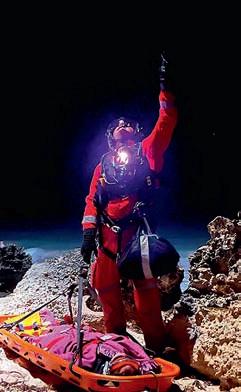


RAC’s Roadside Assistance Patrols are the eyes and ears of WA’s roads.

Moving through streets, freeways, and highways to assist our members, our Patrols have unique insights into the key issues faced by road users, and the opportunities to improve how we travel.
We recently surveyed RAC Patrols on a range of topics. Driver safety and road conditions continue to be the consistent themes our Patrols raise, with distraction, impatience, and congestion rising to the top of the list regularly. Seventy-four per cent of Patrols have seen an increase in distracted driving over the past two years. While the mobile phone was the main cause of distraction, it was not alone. Applying makeup, reading the newspaper, shaving, or even eating breakfast while driving have all made the list of distracted driving.
Impatience is an issue, with 63 per cent of Patrols noting a rise in driver frustration and poor driver etiquette. Examples include aggressive overtaking, tailgating, and a general lack of what may be referred to as good old-fashioned courtesy.
Busier and more rundown roads were also highlighted by RAC Patrols, with 69 per cent noting an increase in congestion during peak periods, and 43 per cent seeing a decline in road quality.
RAC continues to call for more investment in infrastructure, programs and policies that help everyone get to their destinations safer. Upgrading roads and intersections in Perth and regional WA to improve safety and reduce congestion is part of this.
Making it easier for West Australians to choose alternative transport options is also crucial. Every person who can happily catch a bus or train, ride their bike, or take a stroll, is one less car competing for road space.
Another concerning issue raised by RAC Patrols is how often they experience a near-miss accident. The protection of roadside and emergency workers is an issue the WA Government has attempted to address through the introduction of the Slow Down Move Over law in 2018. This law requires motorists to reduce their speed to 40km/h when they see flashing lights of stationary emergency-response vehicles, including RAC patrols and, if possible, move to another lane as they pass. RAC strongly welcomed this new law; however, our concern is that many motorists remain unaware of the requirement due to a lack of ongoing education and enforcement.
The results of the RAC Patrol Survey reinforce some of the significant transport issues in our State. It is also a timely reminder for everyone who gets behind the wheel to be patient, ditch the distractions, slow down, and move over for those who need it most.
Allan Blagaich RAC PresidentRAC Council President
Allan Blagaich
Senior Vice President
John Driscoll
Vice President
Professor Donna Cross OAM
Members of Council
Leanne Bishop
Jill Darby
Professor Ross Dowling AM
Tony Evans
Roger Farley
Stephen Fox
Dalton Gooding
Kelly Hick
Jody Nunn
Marie Redman
Jacqueline Ronchi
Jim Walker
I read the President’s message on drivers’ licence requirements (Horizons, February/ March 2023). The family drivers who are doing the training are just passing their faults onto their students. We need to ensure there are sufficient hours with professional instructors to weed out any inherent problems passed down by amateur instruction. There also appear to be many drivers on the road who don’t know the road rules and/ or have little driving skills. My daughter who is a competent driver took four tests at Joondalup to pass. They failed her on very small infringements that many drivers on the road are doing daily. A drivers’ licence must be a privilege not a right. Doug



I just read the latest Horizons magazine (April/ May) page 14, about getting trapped in your car. This is one of my greatest fears where the car is on fire or sinking in water and I cannot get out due to the doors being locked. I purchased my immediate family members emergency hammers to stow in their car door. It’s also important to be aware of what to do when you are in someone else’s car and have no idea of how to get out. Jaya
My husband and I recently returned from Europe and were impressed by how drivers use the motorways/freeways. It is illegal to overtake a vehicle when using the inside lanes when another vehicle is to the right of you. The fast lanes are only for overtaking and drivers immediately pull back into the lane that is not used for overtaking. The motorways flow and are not clogged up with people sitting in the faster lanes. Australians require more education on this road etiquette which may help to reduce road rage and accidents. Debra

I was reading the article about 91-year-old Betty Nunn (Horizons, April/May 2023) when I remembered that it was in 1946 that I bought my first car, a Morris Minor, for £400 and drove it in Salisbury, Southern Rhodesia. It was the first model Morris Minor with headlights beside the radiator grille, not in the wings as in later models. I think traffic lights were first installed there about that time. I am now 95 and still driving. Charlie
I found this yellowing copy of an Australian motoring magazine, Motor Manual, from September 1958, on my late father-in-law’s farm in Coorow, some 300km north of Perth. He was quite a car buff. Peter
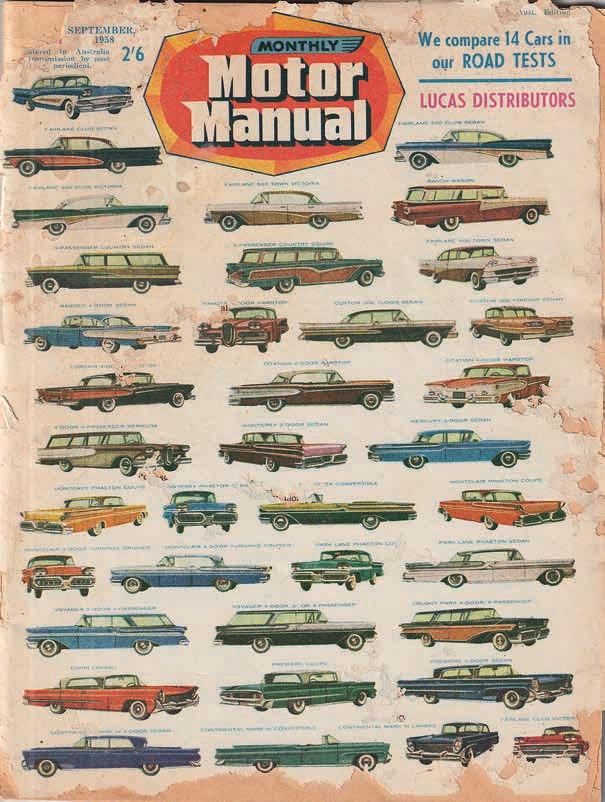
I read with interest your informative article regarding 4WD tagalong touring (Horizons, April/May 2023). The story reminded me of an early WA tagalong tour my parents undertook in the late 1960s. The route was from Laverton to Alice Springs along what is now known as the Great Central Road. In the 1950s and ‘60s it was then commonly known as the Gunbarrel Highway, pioneered and surveyed by our last great explorer Len Beadle. Features visited were Lasseter’s Cave, Warburton Mission, Giles Weather Station, The Olgas (Kata-Tjuta), Ayres Rock (Uluru) and Kings Canyon. The tour leader was Bill Prior. Bill’s lead vehicle was an EH Holden sedan complete with kangaroo bar and canvas water bottles attached. Communication reach day was a schedule with the Flying Doctor Service via Bill’s HF radio. All the tagalong vehicles were sedans and station wagons of the era, Holdens, Fords and if I remember correctly an early 1950s Vanguard. Not one 4WD vehicle.
 Geoffrey
Geoffrey
Join RAC’s Members’ Voice, an online community where members can share their views on a range of topics. Visit rac.com.au/opinion
Both cyclists and motorists have a duty to one another to share our roads safely and legally.
Drivers should remember that cyclists are permitted to ride two abreast, with a maximum of 1.5m between riders. When cycling groups ride two abreast, they’re more visible, and on some roads are easier to overtake because the distance from the back to the front of the group is shorter. However, riding more than two abreast is not permitted. The only exception is where a cyclist or group of cyclists are overtaking another cyclist or group.
Motorists also have a responsibility to keep a safe distance when passing cyclists and other rideable devices using our roads. Where the speed limit is 60km/h or under, motorists must leave a gap of at least 1m when passing a cyclist or other rider. Where the speed limit is more than 60km/h, the gap must be at least 1.5m.

If cyclists are riding two abreast, drivers must leave a 1.5m gap between their vehicle and the cyclist on the far right.
Whenever you do find yourself driving behind a group of cyclists, be patient and wait for a safe opportunity to overtake. You should also reconsider the need to overtake if the group is travelling at a reasonably high speed. If traffic is building up, cycling groups should consider forming a single file to allow other vehicles to overtake where it’s safe to do so.
Since it began, Australia’s organ and tissue donation program has saved more than 16,000 lives. If you’d like to become a registered donor, you must go to donatelife.gov.au to give consent. Contrary to popular myth, consent is not linked to your driver’s licence in WA.
It’s a simple process and takes no more than two minutes. Once registered, you’ll need to make your family aware of your wishes and ensure they will provide consent. Even if you are registered, your family will still be asked to provide consent and can override your decision to donate your organs or tissue.
In 2022, only 54 per cent of families gave consent, so having this important conversation with your family will ensure they’re aware of your donor status and your wishes.
To register, have your Medicare card handy and visit donatelife.gov.au

If you’ve ever compared your car’s speedometer reading to the speed readings on a GPS device, you may have noticed that the speeds don’t quite match up. This is most likely because in Australia, speedo readings in vehicles must not indicate a speed less than the vehicle’s true speed or a speed greater than the vehicle’s true speed by an amount more than 10 per cent plus 4 km/h.

Speedos must always read ‘safe’, meaning that the vehicle’s true speed must not be higher than the speed indicated by the
speedo. In turn, most vehicles’ speedos will read slightly higher than the vehicle’s true speed.
Generally speaking, GPS is very accurate and more so than the speedo, but it doesn’t work all the time, especially in built up areas where there are tall buildings or in areas where there are particular terrain features such as mountainous areas or ridges and cliffs, all of which can interfere with the GPS signal. There are also safety benefits in relying on your speedo, which will also give you a better chance of avoiding speeding fines.
This is largely a myth that has been circulating online for many years. While it can be risky using cruise control in changeable conditions, your car will not begin hydroplaning (also referred to as aquaplaning) when you switch cruise control on in wet weather.

As its name implies, cruise control is designed to be used under steady driving situations. It will attempt to keep the car at a constant speed set by the driver. So if it has been set to 100 km/h, the car will enter a corner at 100 km/h unless the driver intervenes.
That’s where the trouble can start when using cruise control, especially when taking corners at speeds that are too high. In other words, it’s ultimately the driver’s responsibility to ensure the car is safely in control. So, assess the conditions of the road and adjust the vehicle’s speed accordingly.
In any conditions, if cruise control impedes your ability to adjust your vehicle’s speed as needed, don’t use it.
We also strongly recommend drivers turn their headlights on when visibility is less than ideal, and at all times when driving in regional areas.
Rats have a reputation for being voracious chewers, even causing havoc with wiring in homes. They’re also partial to the wiring found in cars, with some suggesting they may be attracted to the plant-based material used for wiring insulation in newer vehicles. Damage caused by rats and mice eating wiring insulation in vehicles is not uncommon. It can also be very expensive to repair to the point where some vehicles must be written off.
And the issue isn’t necessarily confined to rural areas - rodents are where people are, and there are many more people, cars and food in built-up areas.
Some signs that rats may have gnawed your wiring insulation include:

> Poor engine starting and running
> Other electrical issues
> Visible areas of wiring insulation missing/chewed
> Leaves and other nesting-related debris gathered under the bonnet or elsewhere in the vehicle
> Offensive odour of urine/faeces
> Visible rodent droppings
The single best way to prevent rats from nesting is to drive your vehicle regularly. Also don’t leave food in and around your vehicle and, if possible, leave the area around it well-lit at night. It may also help to investigate deterrents such as sprays and sonic repellents.
The Royal Automobile Club of W.A. (Incorporated) (RAC) has a governing body, the Council, which is elected by the voting members of RAC. Each year RAC calls for nominations to the Council from eligible members of RAC, who can commit their time and skills to RAC.
If you are an eligible member with an interest in nominating for election to the Council and would like more information about the role of Council and the obligations of being a Councillor, please contact CouncilElections@rac.com.au
Nominations to fill four vacancies on the Council of RAC open on Monday 3 July 2023 and close 12 noon on Monday 31 July 2023. Subject to the Rules of the RAC, retiring members of Council are eligible for re-election.
Eligibility requirements for nominees are set out in the Associations Incorporation Act 2015 (WA), in the
Rules (Rule 7) and in the By-Laws. The Rules and By-Laws are available on the website: rac.com.au
Prospective nominees are referred to Rules 12.3(a) and (b), which read:
“12.3(a) Except in the case of retiring Councillors who are eligible and offer themselves for election or re-election under rule 12.3(c) and subject to rule 14.1(b)(ii), a person must be nominated by at least 25 Members who are Voting Members as at the date of lodgement of the nomination form.
12.3(b) The procedures to be followed in conducting the nomination process must be set out in the By-Laws, including the requirements for the nomination form and the date by which the nomination form is required to be lodged.”
For application details please contact the Chief Executive, RAC, 832 Wellington Street, West Perth, from 3 July 2023 (or email: CouncilElections@rac.com.au).
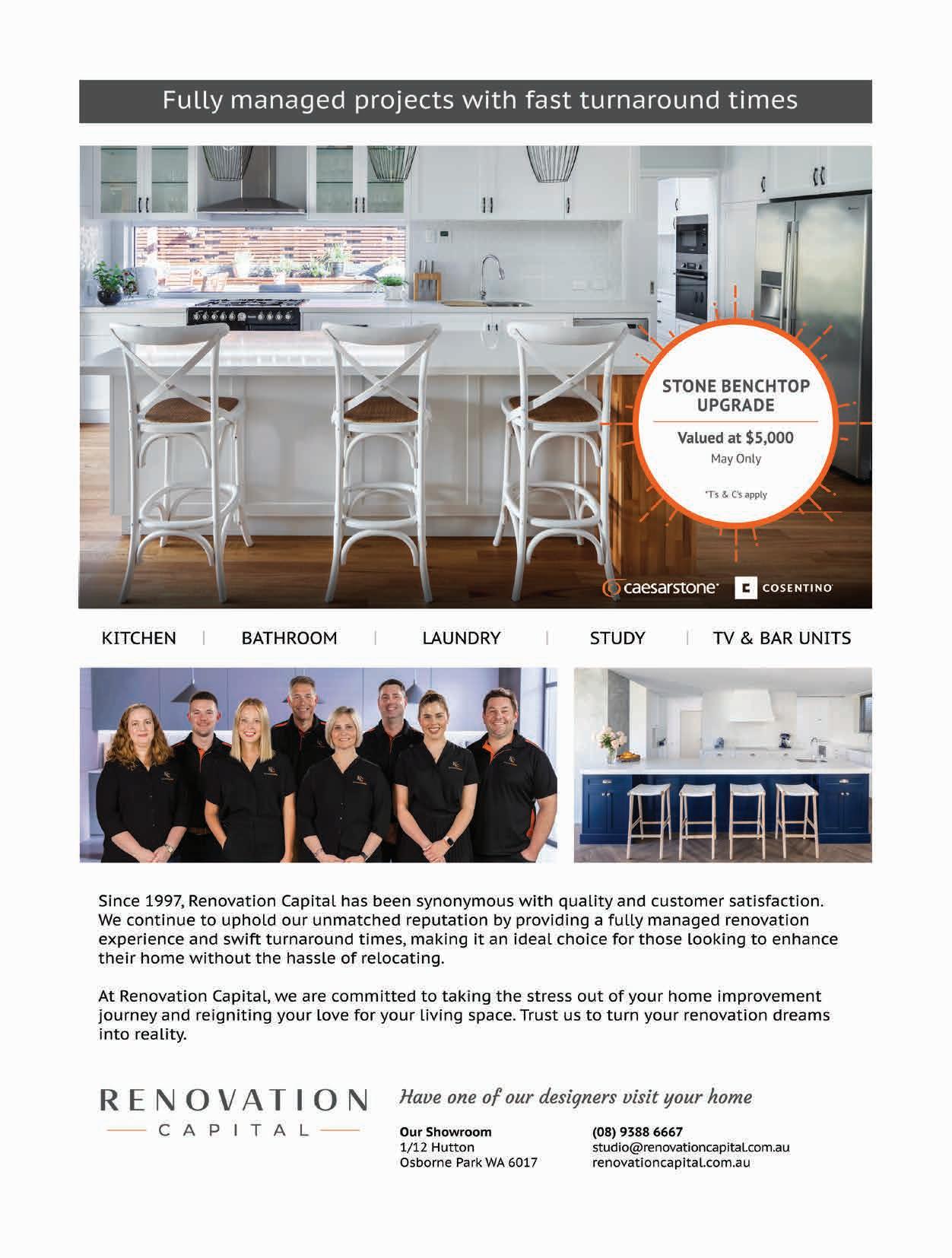


In 1903, a small group of Perth’s earliest vehicle owners assembled for the first organised motor car event in Western Australia. It was a day run from Perth to Armadale.
At that time, cars were seen as a novelty by many and even a nuisance by some as they scared the horses that then dominated the state’s earliest roads and tracks. But a small group of changemakers saw how important motorised transport would be to the future of the state. Two years after this event, the club that would become the RAC was formed. This year marks the 120th anniversary of that historic day run to Armadale. To celebrate, the Veteran and Classic Car Club of WA retraced the tracks of those pioneering WA motorists earlier this year with a run from McCallum Park in Victoria Park to Armadale.
This now annual event saw cars that were more than 100 years old and still licensed to be on the road, taking part.


Some of the vehicles on the run included a 1908 Rover and a 1909 Maxwell - the two oldest vehicles to take part. A 1903 Rambler was also on display though didn’t participate in the run.


“AS ALWAYS, IF IT SEEMS TOO GOOD TO BE TRUE, IT PROBABLY IS.”

It’s one of the oldest tricks in the book — take a car that has plenty of kilometres on the clock and wind back the odometer so it looks like it was only driven to the local shops. It’s a trick so old that in the days of mechanical odometers, crooks would connect a drill to the speedometer cable and set it to reverse or pry off the casing on the gauges and wind back the dials by hand.
But with the advent of digital odometers that practice looked to have vanished — until now.
According to the Motor Trade Association of WA (MTAWA), the dodgy practice has had a resurgence as part of an uptick in organised crime involving used car scams, fuelled by a widespread shortage of second-hand vehicles.
With orders on some new cars still taking up to a year
or more thanks to supply chain issues, some of that demand has been transferred to second-hand vehicles — as has a corresponding rise in the price of used cars. That’s created an increased incentive for organised crime gangs to look for ways to fool legitimate buyers says Stephen Moir, CEO of MTAWA.
“Prices for used cars during the whole of COVID topped out at about 38 per cent higher than what they were pre-COVID, and obviously that’s an opportunity for bad people to take advantage,” Moir says.
“With that opportunity has come some remarkable scams, including odometer tampering, with cars being wound back 100,000 or 150,000 kilometres. It’s so bad that we’re actually
holding crisis meetings with key players in the sector to address the matter.”
The odometer scam has become more common around the globe.
In December, North American used car platform Carfax released research estimating 1.9 million cars on US roads were driving with altered odometers, a 7 per cent rise over the previous year. It estimated the average ‘cost’ to an unwary consumer of buying a car with more miles on the road than on the clock was close to $6000 USD [$8900 AUD].
Not only was the practice rampant, but the organisation argued it was easier now to tamper with an odometer using hacking tools than in previous decades.
In Queensland, a major bust of backyard dealers in 2022 found as many as 700 vehicles — mostly fourwheel drives — were being given mileage makeovers and primped for sale.
In one case, a $8000 Toyota Landcruiser had 400,000 kilometres wiped from its clock — the equivalent of travelling from Earth to the Moon — before being resold for $54,000.
And while such a scam might sound extreme, odometer tampering is just one of the brazen practices catching out Australian drivers.
The MTA’s Stephen Moir says WA still records cases where vehicles that have been in serious crashes and are written off as uneconomic to repair, will resurface with a new paint job and other superficial repairs but still with underlying structural issues.
“Unfortunately, a lot of them end up as ride-share vehicles because many people who drive for these services need an affordable car,” he says.
“Again, consumers are the ones who are most impacted by these vehicles being on the road, when they really should be scrapped.”
In cases where a vehicle appears to be a good deal, offered by someone the buyer might have met through a friend or online, there can be a reluctance to question too closely, he says. But even used car dealers have been caught out by car scammers looking to pass off a vehicle as something it is not.
“For most people, buying a car is an emotional thing. People get very excited and start to dream about their new car and forget about the practicalities,” Stephen Moir says.
“But we’re also seeing even very experienced dealers caught out because the other thing that's happening is that sellers are substituting service books that appear to prove the car has been well maintained.
“So we're seeing an increase in the level of theft of service
books, or replication of service books, mimicking the service orders of the car, which makes it harder to detect the fraud.”
Consumer Protection WA recommends that buyers do a thorough check before buying any second-hand vehicle, including questioning whether a vehicle has previously been in a crash.

A $2 search on the Personal Property Securities Register of the VIN, the unique 17-character vehicle identification number, will show whether the vehicle has been used as security for a debt, has been reported as stolen or has been written off in the past.
Make sure you use the address ppsr.gov.au as there is a similar site using the .com.au suffix, which should be avoided, given it charges more to do the same thing. Without the check, a buyer might find the car can be legally repossessed if the former owner has used it for security but defaulted on a loan.
Consumer Protection WA also recommends anyone buying from a private seller examine the vehicle closely, looking for things such as signs of water in the glove box or water debris under the seat mountings and lifting the seat covers to inspect the original fabric.
It strongly recommends buyers get any vehicle they are considering checked first by a qualified mechanic.
During a recent pre-purchase vehicle inspection carried out by RAC’s Auto Services, a Toyota Landcruiser, which looked its age on the outside, had an immaculate, almost new interior. This seemed odd to the technician carrying out the inspection given the vehicle’s age.
Further investigation revealed the Landcruiser had previously
“PRICES FOR USED CARS DURING THE WHOLE OF COVID TOPPED OUT AT ABOUT 38 PER CENT HIGHER THAN WHAT THEY WERE PRE-COVID, AND OBVIOUSLY THAT’S AN OPPORTUNITY FOR BAD PEOPLE TO TAKE ADVANTAGE.”
suffered internal fire damage which had not been declared by the seller. This was confirmed in the vehicle history report, which was also part of the inspection service. While cosmetically repaired, severe interior damage due to fire could affect the vehicle’s residual value when it comes to be sold again. The buyer decided to walk away from the sale.
One common scam that continues to do the rounds is that of a female Defence officer about to head off on deployment, who is anxious to sell the car she was awarded in her divorce before she ships out. The money, she says, will go to her mother, who will be caring for her two children — how can a buyer resist such a bargain that doubles as a good cause?
In recent years, vehicle scams like this have yielded more than $1 million annually, with ‘sellers’ sometimes co-opting legitimate advertising or sending buyers to fake car sites that are spoofed to look like a real trading platform. In 2022, more than $200,000 was lost in WA alone on this kind of online vehicle scam.
RAC Vehicles and Fuels
Manager Alex Forrest says the pressure many buyers feel to purchase a car before someone else does can lead to rushed decision-making.
“There's more at stake these days when people are trying to find vehicles that are now quite hard to get hold of,” he says.
“So when someone finally does find a suitable vehicle, they tend to put more stock in the opportunity and that raises the risk of them becoming involved in a scam because
the scammers have more leverage and the buyer is more vulnerable.”
He recommends buyers be alert to red flags that might indicate something is not quite right.
“You can find people misrepresenting vehicles, often with low pricing that might get your attention, who are willing to discount it further and are often keen to get the deal done quickly,” Forrest says.
“We see scammers using messaging services to make it sound like a vehicle is nearby, appealing and well-priced. If it has a good history, but the seller doesn’t want to talk to you on the phone, that should raise a red flag.
“Further signs of shady dealings are if the seller is not a dealer but has several vehicles at a location, or if the location is not their home or they say they'll bring the car to you.
“There's no shopfront, no house and no address or phone number that you can chase up if you think you have been scammed.”
While less common, sellers can also be scammed, with fake buyers approaching them from other states, negotiating entirely online and then providing fake bank receipts or PayPal statements that seem to show an amount.

The seller is often required to pay for a ‘courier’ out of their own funds, only to discover later that no money has actually been transferred. While cars are often a key target, Consumer Protection’s ScamNet website reports examples of the scam for the sale of motor bikes, caravans and even horse floats.
Alex Forrest says avoiding vehicle scams old and new can be challenging, but being alert and diligent remains the best defence.
“As hard as it can be to be vigilant when emotions are running high and cars are in short supply, more than ever, you need to be ready to walk away if it doesn’t seem right,” he says.
“As always, if it seems too good to be true, it probably is.”
“BUT WE’RE ALSO SEEING EVEN VERY EXPERIENCED DEALERS CAUGHT OUT… SELLERS ARE SUBSTITUTING SERVICE BOOKS THAT APPEAR TO PROVE THE CAR HAS BEEN WELL MAINTAINED.”



For some time I thought my hearing was not quite right, as it had become somewhat challenging to join in on conversations where there were several people in a group. I’d become quite good at lip reading, and as long as it was a one-on-one conversation and I could face the person and watch their lips, I was getting by. I now nd it surprising that I felt it was OK to keep putting o having my hearing tested. It must be that I didn’t realise how much I was missing out on.
Once I retired though, it was a di erent matter as I joined several craft groups and I found I was missing out on joining in on conversations as we sat along a table with people looking at their work and chatting, so there was little opportunity to lip read. In group situations, it was also di cult to be a participatory part of the group. I had also moved closer to my family, which made me
take my hearing di culties seriously as the grandchildren kept asking their parents: “Why does Nan keep asking us to repeat everything”. My Son braved it and said: “Mum, its time”.
A friend suggested I go and see Brad Hutchinson Hearing as she had found them to be very caring and helpful. After my rst visit to the clinic I was much reassured that I had done the right thing as Brad and the sta were wonderful. I had the whole process explained which gave me con dence that I was making the right decisions. It’s such a bonus that I now have hearing aids that ensure I enjoy all conversations, I’m part of the groups I attend and I no longer have to lip read.


I would like to thank Thea and the team for all the care and most importantly the ongoing support they give to me and everyone.
Heather MitchellTo mark the 20th anniversary of the RAC Rescue helicopter service, we revisit some of the survivor stories that have previously appeared in Horizons magazine.

Since 2003, the RAC Rescue helicopter has been bringing urgent rescue aeromedical care to those in need, across the largest emergency services jurisdiction in the southern hemisphere. After 20 years of serving the Western Australian community, the service has carried out more than 9000 missions, flown 1.8 million km and saved thousands of lives.
The current rescue service, which comprises a Perth and Bunburybased helicopter, can quickly bring rescue capability and aeromedical care to almost 90 per cent of the state’s population. Later this year the three existing aircraft will be replaced by new, next-generation rescue helicopters capable of even greater speed, range, capacity, and with improved on-board capabilities.
In the time immediately following a life-threatening injury, the window for survival decreases rapidly. By being able to quickly reach people in areas that would otherwise be difficult or slow to access, RAC Rescue has been able to provide a lifeline to so many. Here are just some of their stories.
Wayne Lyon’s boat was near Dirk Hartog Island in Shark Bay when his engine failed. On board for a day of fishing was his son Mat and friends Angus and Aaron Gibson. They were about to use the satellite phone to get help when a large wave swamped the boat knocking them all overboard. Fortunately, Wayne had already activated his EPIRB device. The group was washed towards rocks and cliffs where they scrambled
from the water, but Angus was badly injured. They managed to move him out of danger and then they waited. RAC Rescue had just attended another mission near Margaret River when they got the call to head north immediately. After sighting the fishermen, the helicopter was able to land on a small clearing nearby and brought all four on board to safety.
Kojonup local Kevin Gale and a friend were working in a paddock cutting wood with a wood splitting machine when Kevin lost his balance and stumbled back. As he did so, he activated the control for the splitter which came down while his arm was underneath it. Kevin’s arm was severed between his wrist and his forearm. An RAC Rescue helicopter was dispatched immediately and delivered Kevin to hospital within the eight-hour amputee window for the operation. The following day he already had some movement back in his arm and fingers.
For 10 hours Graeme Fry lay pinned under a 400kg quad bike as he drifted in and out of consciousness in an isolated paddock on a Donnybrook farm. The massive weight on his legs was slowly killing him. Fortunately, he’d told his wife where he’d be that day so when he didn’t come home, she raised the alarm. Ground searchers found him late in the day and called for RAC Rescue to attend. With the terrain and a heavy fog, rescuers on the ground used headlights to create an illuminated landing pad to assist the Rescue helicopter. Shortly after, Graeme was on his way to life-saving surgery.



During a guided motorcycle tour near Pemberton, a freak accident saw Peter Butler catapulted from his bike. At the time, the group of riders were on a narrow dirt track deep in the forest. With a broken femur, Peter lay on the ground unable to move. Emergency services were notified and, due to the terrain and inaccessibility by road, the RAC Rescue helicopter was sent to the scene. After being stabilised by the RAC Rescue Critical Care Paramedic, Peter was airlifted to the State Trauma Unit at Royal Perth Hospital and made a full recovery.




The Protzman family were on their way to dinner in Oldbury south-east of Perth when a truck suddenly came out of a side road and clipped their car, sending it off-road into a tree. With his three daughters screaming in the back seat, Steve Protzman carried his unconscious wife Rochelle from the car then quickly returned for the children. Passing motorists stopped and called for help. An RAC Rescue helicopter was tasked and was soon on the scene. A decision was made to transport Rochelle by RAC Rescue due to the severity of her injuries - a trip that would have taken one hour by road but only 10 minutes by air. All family members made a full recovery.
Graeme Robertson was driving into town from his Kulin farm when he hit a truck that had stopped abruptly in the middle of a gravel road. Graeme struck the stationary truck at around 90km/h with the impact so severe he had to be cut from his vehicle. He was initially taken to Kondinin Hospital but due to his injuries, RAC Rescue was called. Miraculously, he survived four embolic strokes, a badly
bruised heart, crushed ribs and other broken bones. After a lengthy recovery Graeme returned to work on his farm.
On an 18-metre fishing boat which was rolling in a large swell off the Great Australian Bight, deckhand Kye Palmer was losing a huge amount of blood after his leg was crushed in the boat’s powerful netting system. An RAC Rescue helicopter was sent to the scene but getting Kye off the boat was difficult with the aircraft battling extreme winds. After several attempts, an RAC Rescue Critical Care Paramedic made it to the boat’s deck and prepared Kye to be hoisted up. Kye was brought on board just as the light was fading and given blood transfusions in-flight as the crew organised aeromedical, fixed-wing transport to meet them at Esperance Airport for transport back to Perth.
It was after dark when the RAC Rescue crew at the Perth base got a call that two people had fallen from a cliff near Ledge Point. Using night vision goggles and the helicopter’s Forward Looking InfraRed camera, the pair were found in a small
space close to the water. Both were badly injured and needed urgent medical care. With high winds making it difficult to maintain a steady hover, the RAC Rescue Critical Care Paramedic with the helicopter hoist stretcher was carefully lowered into the cramped space. One of the rescued was then transferred to hospital by road ambulance and the more critically injured stayed on the helicopter for the flight to the Royal Perth Hospital rooftop heliport.
During the 2021 floods in Carnarvon, the backup RAC Rescue helicopter was mobilised to support rescue and relief operations. Within the first 24 hours of being on-scene in Carnarvon, the helicopter rescued 35 people trapped and isolated on roads and houses from rising flood waters. During its weeklong deployment, RAC Rescue not only provided its normal life-saving duties, but also successfully completed the search and rescue of 72 people, emergency personnel transport, and resupply of critical equipment, food and water.


The theft of documents containing personal information has been highlighted as an emerging issue in RAC’s 2022 Home Security Survey.
The survey of RAC members found that 18 per cent have had identity documents stolen from their home during a break-in. This is up from 15 per cent who reported identity document theft in 2020.
Theft of high value items, such as jewellery, watches, wallets and purses also saw a big increase.
Of those who had experienced a break-in, 43 per cent reported the theft of wallets and purses – up from 28 per cent in 2020.
Theft from outside a current or previous home (in front and backyards) was reported by 16 per cent of members.
Overall, 12 per cent of respondents said they had experienced a break-in, either in their current home or a previous home.
Each year, RAC’s Home Security Survey provides an insight into member’s security behaviours, their experiences with home break-ins and other thefts, and how safe they feel in their home and their local community.
To assess the level of security in and around your home and for ideas on how to improve it, use the RAC Security checklist. Visit rac.com.au/securitytips

80% of people took action to improve home security following a break-in

HOME SECURITY BEHAVIOURS
15% don’t activate their security system when leaving home
36% still keep spare keys outside their home
13% don’t check that windows are locked before leaving home
BREAK-INS OF THOSE WHO HAVE EXPERIENCED A HOME BURGLARY:
29% were at home when it occurred
33% of break-ins were forced entry through a window
25% of break-ins were forced entry through a door
IF YOU HEARD A SECURITY ALARM IN YOUR STREET, WOULD YOU CALL POLICE? YES
ITEMS STOLEN
Wallet, purse, handbag
43% 28% Jewellery, watches
45% 46% Cash
37% 40%
Following the film industry for nearly two decades saw former Perth residents Jodie Passmore and Aron Dyer living in the Eastern States and travelling the world for different jobs.
It was an exciting life, that taught the pair and their two young children to live happily on a smaller footprint than the average four by two home on a sprawling block. “We found ourselves in Japan rolling out tatami mats and thinking we don’t really need as much space as we thought we did, and all the time we were visiting places where people were living more sustainably and more consciously,” Jodie Passmore says.
The couple now call a unique project in WA’s South West home — living in one of the state’s first fully developed ecovillages in the small town of Witchcliffe, 10km south of Margaret River.
The Witchcliffe Ecovillage is a grand initiative founded by Sustainable Settlements Director Mike Hulme, who first identified the 120-hectare site as a potential ecovillage location in 1994, finally acquiring the land 16 years later with joint venture partners the Perron Group.
After significant time spent master planning and establishing the ground rules for a more community-focused property development, nearly 200 ecovillage residential lots have sold in what is designed to be a model not only for sustainable living but for more connected communities and healthier lives.
Some 65 homes are currently under construction and the ecovillage’s communications and marketing manager, Jo Thierfelder, says 40 families, couples and singles have already moved in.
Ecovillages have been a concept for about 40 years, occurring more frequently in Europe than in Australia, and offer a way of living rarely found in urban environments.
RAC acting general manager Social Impact, Marion Morton, understands the appeal, noting that the desire for increased social connection is a common theme among RAC members, as is the growing focus on finding a more sustainable way to live.

“We have noticed that sustainability and community are becoming increasingly important to our members, and that many are becoming more conscious about the environmental impact of their actions and looking for services and products that align to their values,” she says.
“Ecovillages aim to be 100 per cent self-sufficient through renewable energy, the sustainable use of water, growing organic, fresh produce and taking care of the local ecology.
“People appreciate being able to get around easily by foot or by bike and participating in community life.
It’s great that we’ve got these examples where people can build social connection and also interact with the environment and their community.”
Many ecovillages start as small communities who decide to band together to share resources and live more sustainably, using their collective strengths to achieve more than they could individually. They might begin by sharing food resources, for example, and evolve over time into generating renewable power for the village.
In contrast, Witchcliffe Ecovillage has started with the end goal in sight, and Jo Thierfelder says the developers see the project as a way to demonstrate the possibilities of sustainable development and community living.

Although WA has something similar in the co-housing initiative Decohousing in Denmark, few property developers are prepared to adopt such sweeping initiatives.
“When we talk about sustainability here, we focus on the triple bottom line — an environmental focus and an economic and social component as well,” she says. “We are a lot more than a group of residential homes. There’s a whole public realm with a village square and a commercial precinct, and a really good spread of residents from young families through to retirees.”
Sustainability runs as a thread throughout the design and development of the
ecovillage, both for individual homes and sub-groups of houses known as clusters. Many of the initiatives are focused on reducing household energy and emissions, with homes required to be built to passive solar and energy efficient designs, with the incorporation of household solar panels, rainwater tanks and the use of natural and sustainable building materials.
But the design also leverages the commitment of residents to shared sustainability projects, from 11 community gardens with vegetable patches to encourage food production, to a small orchard and shared tool sheds, to microgrids and battery storage.
Electric vehicle charging stations are also a priority — with a clever business model that looks to capture additional solar energy from households and use that to power two EV fast-charging stations in each cluster, the income from which in turn offsets residents’ strata levies.

“People appreciate being able to get around easily by foot or by bike and participating in community life.”
Economic sustainability is also a focus. Homes are connected to the NBN to enable home-based working, but there is also a push to keep jobs local. Within the commercial precinct and village square, building lots have been specially designed to allow a ground floor studio or shop and upper floor living to encourage businesses to the ecovillage.

“Each of our residential clusters has between 19 and 26 homes, and there’s been some great social research on what the perfect number for a good community is,” Thierfelder says.
“They are laid out in a semicircle around a central community garden, so while the lots themselves are freehold title lots for all intents and purposes, they are strata, so all lot owners also own the community

garden in common, with shared infrastructure like a little meeting house, covered orchard, play spaces and fire pits.
“For me, I feel like it straddles the mainstream idea where you want your own private space, but you also have shared community facilities.”
All up, about two thirds of the ecovillage site is dedicated to public open space, agricultural lots, community gardens, conservation areas and Ecovillage Commons land. Winter creeks have been included in the landscaping, flowing into three dams that collect storm water for later use in irrigation.
Properties are also carefully designed, with a range of pre-designed homes that already meet design criteria, which can be
Affordability has also been part of the planning — a portion of lots have been dedicated to cottage blocks suited to singles or couples who are on low to medium incomes.
built in timber, hempcrete, straw bale or reverse brick veneer. Custom homes are permitted but, like all designs, must meet high environmental standards and pass a life cycle assessment on their total impact. Affordability has also been part of the planning — a portion of lots have been dedicated to ‘groupie’ blocks suited to singles or couples who are on low to medium incomes, with the goal of creating small sustainable housing with low ongoing costs.
Jodie Passmore and Aron Dyer turned to family friend and architect Adrian Welke to develop a 96sq m home within the ecovillage and say they haven’t looked back. “The idea of growing some of our own food and living more sustainably, being near other people who are interested in doing that too, was very appealing,” Passmore says.
“And now here we are a year later where our children have their best friends living across the street and on the weekends there’s a flurry of children running in and out of our house.
“They swim at the dam together, they’ve been building nesting boxes for possums and birds together, and climbing the neighbouring trees. We feel pretty lucky to have landed in this growing community of people, all really seeking similar things.”
Karen and David Millar are both semi-retired, Karen working with the management team at the Witchcliffe Ecovillage and David as a GP specialising in men’s health in Margaret River.
The couple, originally from Fremantle, moved to the ecovillage late in 2022,

after renting in Margaret River while they built. But Karen says even before the house was complete, they were regulars there, working on the veggie patch attached to their property and getting to know the community.
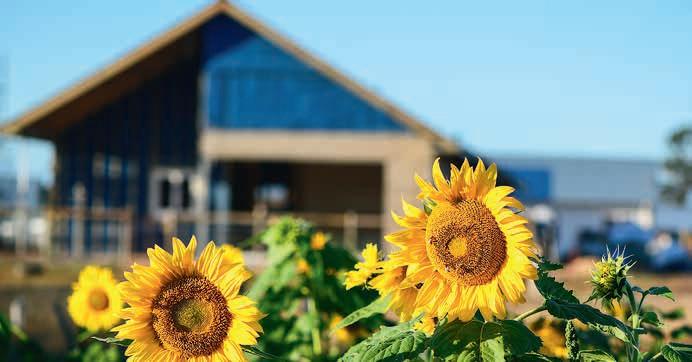

“We wanted to feel connected and start meeting the people that were around and get the soil ready for planting, so we started at least 18 months before moving and we’re reaping the benefits of that now,” she says.
The community aspect has been greater than she expected, with neighbours happy to help the couple move in, offering ready-cooked meals and dropping off veggies.
“Here people that we’ve met have become friends pretty quickly. I think both the place and the people around us are just delightful.”











One of the most enjoyable aspects of camping and caravanning is the chance to slow life down, even if just for a little bit. We can spend a day doing nothing at all or everything we never have time for. And we don’t have to feel guilty about it. For so many of us, that means more time for good food, and camp cooking can be a very enjoyable way to indulge. Both Harry Fisher and Ash Butler agree. They
are each the author of their own camping and caravanning cookbook, and despite their very different approaches to food, both have very similar advice when it comes to setting up a camp kitchen.
Harry Fisher is a Western Australian YouTuber who exclusively cooks over campfires. His book, and YouTube channel of the same name, Fire To Fork, is an ode to hearty, family favourites.
Ash Butler hails from Victoria’s Surf Coast, and her book, The Small Kitchen Cook, is a collection of wholesome, seasonal recipes perfect for when you’ve only got one or two burners and a big appetite. This is what they’ve found is the best way to set up a camp kitchen to make the most of camp cooking.


Storage drawers
Efficient storage systems that are easy to keep tidy are of high importance. Look to incorporate drawers where possible over cupboards or cabinets if in a caravan or camper. They’re easier to see to the back of, rather than being down low near the floor. Once things get hard to keep tidy, it’s hard to find inspiration in the kitchen.
If you’re building your own drawers and storage areas, don’t make them so specific that you can’t change your mind later. For example, if your fridge breaks and you can’t replace it with the same model, will a suitable alternative still fit?
Camping fridges
Neither Harry Fisher nor Ash Butler would travel far without a decent camp fridge. If you’re in a campervan or caravan look for an upright style fridge that can fit under a benchtop and one with about 85-130 litres in capacity. Fitting them underneath saves space and won’t make your kitchen area feel closed in. For camping, look for a
good quality chest fridge of about 50 litres for a couple, plus an extra ten or 15-litres capacity per child.
Good camp lighting
Camping lights have become much more sophisticated than gas lanterns and incandescent caravan globes of the old days. Almost all camp lighting is LED these days, and very efficient. Good lighting can make the difference between an easily cooked meal and burnt, overcooked steaks.
Camping power
In the past, gas was used to run the fridge and lanterns, and ice for the eski used to be commonplace. Today battery and solar are becoming so accessible that if you’re serious about camping and plan to do it regularly, it’s the way to go. At a minimum, a 120Ah AGM battery with 175 watts of solar as a backup will keep the average fridge and camp lights running and devices charged. A good DC-DC charger with solar input to manage the system is also recommended. Lithium batteries are becoming more and more accessible and are worth looking into, too.

Especially if you’re planning a lot of free camping or remote travel, carrying enough water is important. You’ll need to store about 15 litres per person per day, which should be enough for cooking, drinking and washing, but probably not showering.
Although Ash Butler predominantly cooks on a gas hob and Harry Fisher over a campfire, both tend to agree on the most important camp cooking gear and say it’s worth spending as much as you can afford rather than settling on the cheapest gear available. Over and above the essentials of eating (plates, bowls, cups and cutlery), here’s some gear that will make your camp cooking really enjoyable.


Cast iron is a great choice for a frying pan as is spun steel which is lighter than cast iron – although won’t retain heat as well as cast iron. If it can be put on a campfire, that’s always going to be an extra benefit.
Once again cast iron is a great choice for pots, as is spun steel for pots and camp ovens that can be used over or in a fire.
If you find cutting things up tiresome, your knife probably isn’t sharp enough. Good quality, sharp knives are a must, plus the tools to keep them that way.
Carry a couple with you and use one for meat and the other for everything else.
If you’re a fan of cooking over a campfire, get a portable firepit for when you need to keep the fire contained and off the ground. Add a large grill plate to use with it and a South-African style grill basket. And of course, always check that you’re permitted to light fires wherever you’re staying.
A two-burner hob, whether that’s gas or induction, is enough for most meals. Ovens are nice, but not essential.
If you are really serious about good, indulgent food while camping, the sky is the limit in terms of what luxuries you can carry with you.
As battery capacity and inverter technology improve, it’s increasingly common for campers to install espresso machines in their caravans, camper trailers and even four-wheel drives. A 3000-watt inverter should power most espresso machines, so you just need to carry the battery capacity to maintain it.
12-volt pie ovens
Are there any simpler pleasures than a hot pie and tomato sauce for lunch? 12-volt pie ovens are becoming more popular, and campers are getting increasingly inventive in what they can cook. Imagine rocking up to camp to enjoy a five-hour brisket after a long drive.

Although many caravans have had hot water systems for a long time, the development of gas-powered instant hot water camping systems has made it far more accessible for all campers. They’re perfect for making washing up easy or showers enjoyable.
For all the fancy gear you can now buy, camp cooking can still be daunting, especially in an unfamiliar kitchen with limited
equipment and when the local supermarket might be a few hours’ drive away. Here are some tips to take the stress out of it. Plan and prepare before you go Nothing is more frustrating than only having half the ingredients for five meals. Plan your meals ahead of time, so you know what you’ll need. Harry Fisher recommends premaking any sauces or marinades you might want before you leave home, as they often have a lot of ingredients, and you don’t want to have to take it all with you.
With time on your hands for culinary creation, this isn’t time for tinned spaghetti and 2-minute noodles. While you’re on the road, make a stop at local butchers and fishmongers rather than supermarkets, and explore local farmers’ markets for inspiration.

For the best results when cooking over a campfire, learn to estimate the right heat using your hand – safely of course. The heat is low if you can hold your hand near the cooking surface for eight to ten seconds. At five seconds, the heat is medium. If only three or four seconds, the heat is medium-high. If you can’t hold your hand there at all, the heat is high, and that’s perfect for searing steaks.
The important thing is, no matter how you’re using your camp kitchen or whatever you’re cooking, make sure you’re having fun. You are on holiday, after all.

A trip out to the Dampier Peninsula is a must if you’re staying in Broome, and Outback Horizons’ new Dampier Peninsula Cultural Day Tour can take you to experience all the highlights of this stunning region on a full day tour.


From Broome, you’ll head out to the Dampier Peninsula to meet Bardi-Jawi man, Bolo Angus, in his Lullumb ancestral home. Bolo will lead you on a cultural walking tour along the coast where you can try your hand at traditional hunting methods and search for bush tucker. After gathering enough bush foods, Bolo will cook it for you and share stories and songs around a campfire.
From there, you’ll visit the intriguing Sacred Heart Church in Beagle Bay built by German monks in 1917, with its altar made of local shells.
The tour winds up back in Broome with sunset drinks and appetisers on Cable Beach.
To find out more and to book, visit outbackhorizons55.rezdy.com
The glamping experiences on offer in WA continue to grow, with luxury tents located in every corner of the state.
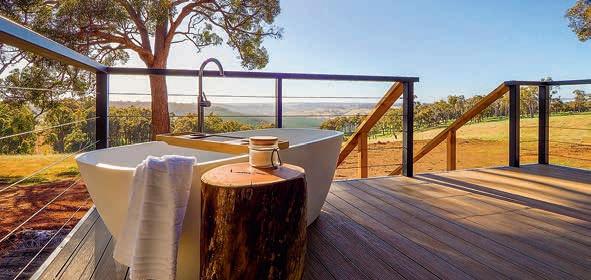
In the South West, Serenity Gully near Bridgetown has recently added three more glamping tents to their 478-acre property.

Serenity Gully’s five-star glamping experience is completely off-grid, with the tents fully powered by solar energy.
Each tent is positioned for maximum privacy and has an ensuite, a king-size bed, a dining table and lounge, and a well-stocked kitchenette. Outdoors, there’s a wide deck with views over the forest, your own outdoor stone bathtub, a barbeque and a firepit. To keep you warm in winter, each tent also has a slow combustion heater plus hot water bottles and extra blankets.
Serenity Gully is just five minutes from Bridgetown in Kangaroo Gully. Find out more at serenitygully.com.au
Coral Bay and Exmouth are two of the few places in Australia where you can get in the water and swim with humpback whales, and the 2023 season is about to commence.
Swimming alongside a massive humpback – which can be up to 19m in length – is a truly exhilarating experience and one you’ll remember forever.
In-water interaction tours typically run from the start of July until the end of September in Coral Bay, and from the start of
August until the end of October in Exmouth.
With around 40,000 whales migrating along WA’s coast each year, there are plenty of opportunities to see them from above the water, too. You can join one of the many whale watching tours that leave from Geraldton, Kalbarri, Shark Bay, Coral Bay and Exmouth between June and November.
For more information about humpback whale tours along the Coral Coast, visit australiascoralcoast.com

Dwellingup’s impressive new suspension bridge is now giving riders and walkers direct access to the extensive Murray Valley mountain bike trail network from the Baden Powel Campground and Dwaarlindjirraap day use area.

Standing tall among the towering trees, the bridge stretches a remarkable 148 metres and incorporates a viewing platform, with awe-inspiring panoramic views over the Murray River.

The new bridge is suitable for cyclists and walkers only, with no off-road vehicles allowed.

If your holiday budget is tight, RAC’s Holiday Parks & Resorts have a number of low-cost winter getaway options. You can secure a powered or unpowered campsite, with excellent on-site facilities, and stay for three nights but only pay for two at selected holiday parks and resorts. Choose from South West properties in Busselton, Margaret River, Esperance and Karri Valley (near Pemberton), or head north to Cervantes.
If you plan your getaway mid-week at any of these locations, you can also take advantage of discounts on other accommodation, including villas and self-contained cabins.
Rug up and enjoy winter walks on the beach and relaxing nights in front of cosy fires at these great holiday destinations. To find out more about our winter offers and to book, visit parksandresorts.rac.com.au/specialoffers
2024 EARLY BIRD FARES AVAILABLE
Broome to Darwin 13 Days Apr– Sep 2024
Explore the stunning Kimberley region aboard one of Outback Spirit’s most popular 4WD adventures. This spectacular expedition includes all the must-see attractions in the region. You’ll stay in hotels, resorts and wilderness lodges in the best locations and travel in a small group aboard a custom 4WD Mercedes Benz coach, with an experienced and passionate Kimberley guide.
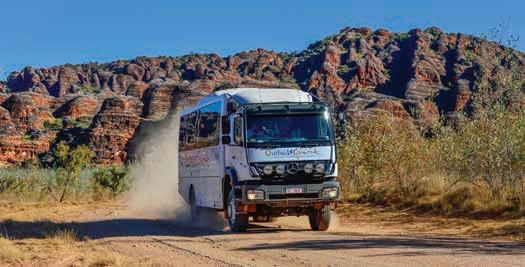
13 days from $10,880 * pp
EARLY BIRD OFFER - Book by 30 Sep
$2,800 * pc
Small group max. 20 guests
Highlights of the adventure include
All-inclusive Tour
• Visit the Horizontal Falls by seaplane and cruise through the falls and surrounding bays
• Explore Punamii Uunpuu, Mitchell Falls and the Bungle Bungles on a scenic heli flight
• Discover Ngauwudu, the Mitchell Plateau and spend 2 nights in Outback Spirit’s exclusive Ngauwudu Safari Camp
• Cruise Geikie Gorge on the Fitzroy River and Ord River
• View ancient Gwion and Wanjina cultural art sites, accompanied by a Wunambal Gaambera Traditional Owner
• Visit the spectacular Windjana Gorge and Tunnel Creek National Parks


Broome is without doubt one of Australia’s most coveted travel destinations. There’s plenty to attract visitors to this geographically beautiful and rich historical location.
Whilst its remoteness compels many to fly there, Broome presents arguably one of Australia’s best extended road trip opportunities.

Taking an extended trip means you can savour many other amazing sites along the way, and it gives drivers a good amount of time to rest between some lengthy drives.
Big road trips require manageable stretches mixed with stopovers to rest and enjoy the surrounds. This return itinerary takes in more than 4000km, so plan your stops well. Take a 15-min break from driving every two hours and limit your driving to no more than eight hours a day.
Perth to Kalbarri
Distance: 570km (6hr 20min)
Reachable in around six and a half hours and taking in the Indian Ocean coastline for parts of the way, Kalbarri is the perfect first stop on your Broome road trip. Set around the mouth of the Murchison River, there’s plenty to explore in and around this favourite West Aussie holiday getaway. Go by foot along the ocean side or the river itself, or via a short car trip to the spectacular ocean cliffs and lookouts on the southern edge of town. For swimming, head to Blue Holes, a sheltered spot just a 5-min drive from town or walk there on the 2km Melaleuca Walk Trial.
Must see and do
A visit to Kalbarri’s National Park and the dual Skywalk is a must. Energetic hikers can tackle the Loop, an 8km trail (class four hike) at the base of the gorges near Nature’s Window. An alternative is hiring a kayak or canoe and paddling along the downstream stretch of the river.

Distance: 398km (4hr 30min)
The Overlander roadhouse lies at the gateway to the “pronged” peninsular and waters of Shark Bay. This turnoff from the North West Coastal Highway is the start of a 150km section of road that goes past Hamelin Pool and the prehistoric stromatolites with purpose-built boardwalks for visitors, while further on, another stop of interest is at Shell Beach. The road eventually takes you to Denham and then beyond that, Monkey Mia lies on the eastern side of the Peron Peninsular. Must see and do
A visit to Monkey Mia would not be complete without standing in the shallows to greet the region’s famous bottlenose dolphins. Time permitting (and fourwheel drive equipped) the Francois Peron National Park boasts some spectacularly vivid coastal landscapes to explore and photograph, particularly early morning or late afternoon.
Distance: 581km (6hr 30min)
It’s not far north off the junction back on the highway that the landscape becomes increasingly desolate. To break up this long stretch, consider a stop for lunch in Carnarvon. Your return from Broome includes a stay here but it’s a good halfway point for a break on the way to Coral Bay.
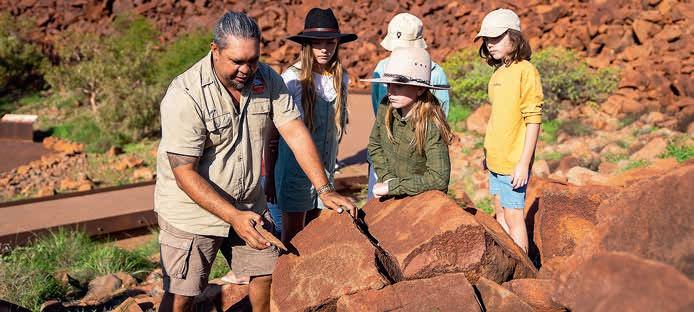
North of Carnarvon the contrast between this changing landscape and the North West coastline becomes quite stunning with more than 200km of captivating Ningaloo Reef and picture-perfect sandy bays. At its heart is Coral Bay, perfectly located for those wanting to take advantage of this coral jewel and its marine attractions. Must see and do
Simply take in the coastline, whether that be standing in waist-deep water right in front of the settlement and watching the big, tame, spangled emperor swimming around you, or head out in any direction with snorkelling gear – you won’t be disappointed.
Ningaloo Reef is the only place in Australia and one of few places in the world where you can swim with whale sharks, manta rays and humpback whales from a single location, and the coast between Coral Bay and Exmouth is where it all happens.
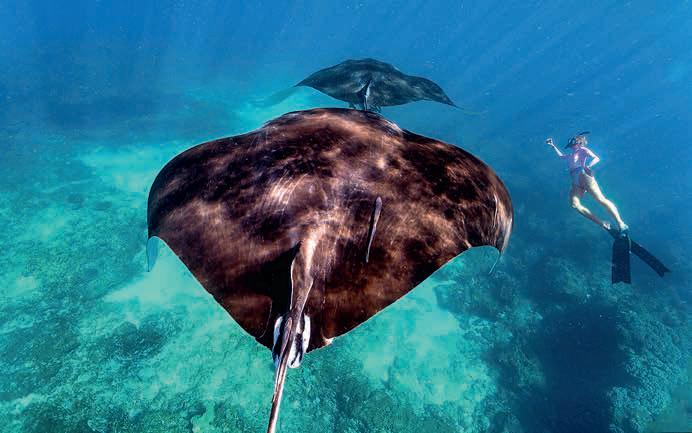

Keen anglers can experience deep-sea fishing at its best here on a fishing charter and for four-wheel drivers, there’s a network of off-road tracks to explore. Check out the tracks at Oyster Bridge and Five Fingers Reef.
Distance: 522km (approx. 6hr)
It’s time to set your sights on Karratha. The best and shortest route on what are now excellent highway roads is to head north out of Coral Bay towards Exmouth for around 55km until you reach the wellsignposted Burkett Road turnoff. This 78km section across the bottom of the Gulf goes back out on the North West Coastal Highway, chopping off a lot of distance in the process.
Karratha is a large, modern regional mining hub with excellent facilities and services. It’s a good spot to grab some supplies before continuing on.
Must see and do
If the timing works, a look at the Burrup Peninsula’s famous Aboriginal rock art is an absolute must. Clinton Walker from Ngurrangga Tours will provide expert guidance on these 50,000-year-old remnants of Aboriginal history and culture, dotted everywhere across the peninsula. The start of the next leg can also be combined with short stops at what’s left of the historic townsite of Cossack and the sleepy little prawning settlement at Point Samson. Don’t miss the fish and chips from here.
Distance: 485km (minimum 5hr 30min)
Break the long 840km haul from Karratha to Broome with an overnight stay at Eighty Mile Beach. It will give you more time to check out the sights at Cossack,

Point Samson and the famous Whim Creek pub, along the way. The name says it all for Eighty Mile; it’s a seemingly never-ending, flat expanse of tidal beach.
Must see and do
This is the place for an extended beach walk. Or if you’re a keen angler, break out the rod when the tide is coming in – northern threadfin salmon are often caught here as they cruise in with the rising waters.
Distance: 376km (4hr 30min)
From Eighty Mile up to Roebuck Bay and into Broome, is a relatively short jaunt and half a day on the road.
For your first night in town, head to Cable Beach to watch one of Australia’s best ocean sunsets. From there, settle in for a meal at the Mangrove Hotel overlooking Roebuck Bay or head to Matso’s Brewery.
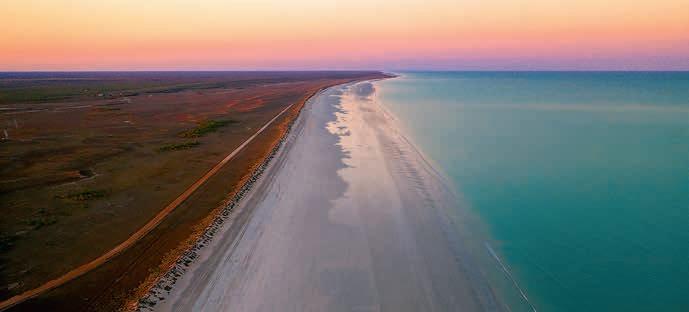
If your timing is right, you might get to see Broome’s Staircase to the Moon,


when the full moon lights up the bay’s tidal flats at the bottom of the spring tide, giving the effect of a glittering staircase that rises into the night sky. Check with the Broome Visitor Centre for dates.
Broome’s Sun Pictures is the world’s oldest operating picture garden and catching a movie there under Broome’s starry skies is a special experience.
Even older still are Broome’s dinosaur footprints preserved in the rocks around Gantheaume Point. You can visit on your own or take a guided tour to be shown some of the most impressive prints.
A day trip up the Dampier Peninsula is a must and with a four-wheel drive you can extend the trip beyond Willie Creek. Call in to the famous Sacred Heart Church at Beagle Bay and then take in the amazing colours of Cape Leveque.

Distance: 610km (6hr 30min)
This is the start of your return leg. Time the drive to be in Port Hedland by late afternoon so you’ve got time to settle into your overnight accommodation and check any last-minute details before the early morning start for Karijini.

Distance: 335km (minimum 4hr)
Head out very early 42km west, for the turnoff for Great Northern Highway towards Newman. This southwards journey is the route to Karijini, with the next important stop being Auski Roadhouse to refuel. Continue on for 35km, turn right onto Karijini Drive until reaching the eastern entry point to Karijini National Park. Follow the signs to the Karijini Visitor Centre - the essential starting point to exploring the magical gorges and swimming holes throughout this unforgettable Pilbara highlight.
The early start will provide plenty of time for you to take in some afternoon excursions in the park and then settle in for the night. Two-wheel drive vehicles can negotiate most of the park’s roads quite easily with care and slow speeds on the corrugated
section, but four-wheel drives will certainly get to more of the isolated sites. Must see and do
Dale’s and Joffre gorges, Fern Pool, Fortescue Falls and other park sites, depending on your energy levels. Staring up at the Milky Way at night here is as good as it gets anywhere in central Australia.

Distance: 72km (minimum 1hr)
Use most of the day to take in other spots of interest in the park before leaving for Tom Price, a short one-hour trip to the west. Resting up here overnight is important for the early launch into the long stretch ahead. Take a trip to the supermarket here if you need to stock up.
Distance: 661km (minimum 8hr)
The way back to the North West Coastal Highway from Tom Price is on the sealed, arterial road to Nanaturra Roadhouse, 296km to the west. A decent rest stop, refueling and a walk over to the 240m-long Ashburton River bridge nearby to stretch the legs, is just the ticket before tackling the second half of the trek to Carnarvon.
Must see and do
Arrive with a few hours of daylight and there’s the prospect of picking up some fresh mangoes, bananas or other produce from farms that sell direct to the public. Carnarvon’s Space and Technology Museum is worth a look, especially around the critical role it played in NASA’s first Moon landing.
Distance: 698km (minimum 7hr 20min)
Cervantes is the quintessential cray fishing town. Laid back and relaxing, it has that ideal atmosphere to enjoy the last leg of an epic holiday road trip. Must see and do
No stay at Cervantes is complete without satisfying the taste buds at the famous eatery, the Lobster Shack. Within easy driving distance, the intriguing landscape of the Pinnacles is an interesting stop if you haven’t been before.


RAC members get exclusive rates at our holiday parks and resorts in iconic locations along the Coral Coast, including Broome. Visit parksandresorts.rac.com.au
Allow plenty of lead-up time to book things in advance and prepare your vehicle. Make sure its servicing is up to date, with the tyres and battery in good condition. Carry some tools, a First Aid kit, some basic vehicle spare parts and additional fuel and water.
For four-wheel drives, depending on how far off the sealed highway you intend to travel, a second spare tyre, satellite phone and vehicle recovery gear may also be worth thinking about.
Avoid the warmest months, cyclone season in the north and the poorest road conditions. Very important for any extensive road trip is a good quality map. Relying on the internet when travelling in more remote areas is not a reliable choice.



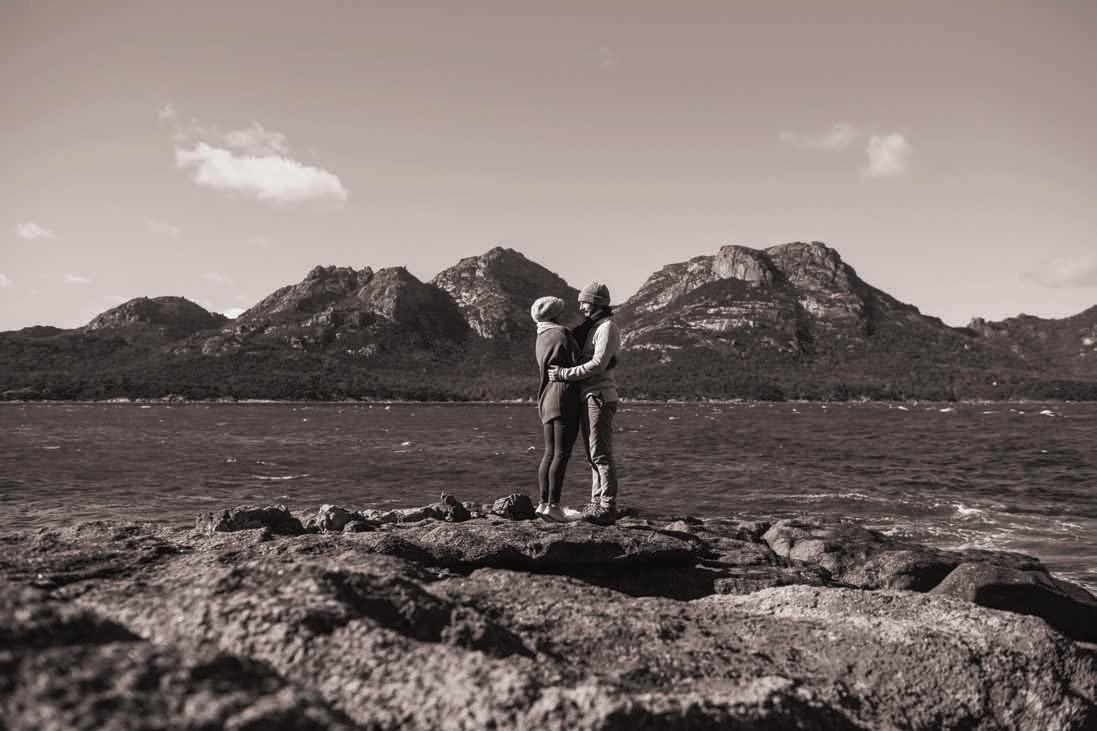

As tourism returns to our favourite international island, families are once again planning holiday escapes to Bali. Here’s our guide to family fun - beyond the crowds.
During the COVID-19 pandemic, tourism in Bali ground to a halt. Previously bustling areas became ghost towns, and businesses shut down en mass. But it also fuelled significant development, with investors diving on bargain property prices and preparing for tourism’s comeback.
The Bali that Western Australians return to does not necessarily look the way we remember it: prices for hotels and food have risen in line with their sophistication - room rates now range from $100/night to $1000/night - while traffic delays have worsened. Yet the Balinese charm and the focus on relaxing has remained.
Most families travelling to Bali will be familiar with the rowdy hotspot of Kuta, as well as the higher end, all-inclusive resort experience of Nusa Dua and the packed-to-the-gills shopping and restaurant area of Seminyak. But what else is out there for families, especially those looking to escape the masses and avoid the party beats? Here’s where to set your compass for a fantastic, post-pandemic family stay filled with kid-friendly activities.


Set along several kilometres of calm beachfront, Sanur is one of Bali’s tourism birthplaces, with the first resorts opening in the 1950s. As Bali’s other regions have boomed, it has retained a slow and safe atmosphere, making it a magnet for families.

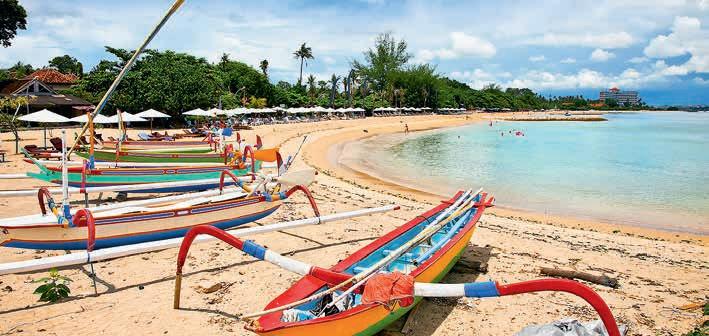
A paved walking path runs along the top of the beach, past family-run cafes (warungs), open air beach clubs and bicycle and electric scooter hire spots (from $2 and $5/hr respectively). Painted Balinese fishing boats bob on the flat ocean and a turtle conservation centre houses rescue turtles (entry by donation). Markets run alongside streets and eager vendors ask your name as you pass byand remember it.
Segara Village Hotel is ideal for families. Its lush gardens are dotted with carved statues that lead to a playground and a new kindergarten with a day care wing (from $7/child/day). Resident ducks, chickens and guinea fowl forage beside the lagoon pool, while a larger pool is serviced by the hotel’s modern-day club, Byrd House. With an Italian resident chef, it serves excellent pizza, handmade pasta and Indonesian dishes – but it’s the morning buffet, complete with French pastries, that really gets the kids excited. Next door, there’s a mini enclosed playpark; entry with face painting costs about $4 for two kids.
It may be busier than ever, but Ubud remains a worthy destination for families looking to unwind. Hotels provide sanctuaries, while attractions such as the Sacred Monkey Forest Sanctuary (watch for monkeys on roofs and power lines as you approach), Ubud Palace and Saraswati Temple are easy to access on foot, or in a cheap Grab taxi.


“Ubud has elevated itself with a bunch of new restaurants, and more areas being activated,” says expat chef, Will Meyrick, who recently opened speakeasy diner, Honey and Smoke. “Before it was spread across one or two streets. Now there are loads of little streets, nooks and crannies, and tiny shop fronts and coffee spots.”
Newly opened hotel, Titik Dua provides a tranquil escape, with its artful brick architecture and water features facing a pristine swimming pool edged by jungle, an art gallery and a new restaurant called Ramu. The warm Balinese culture means children are welcomed at ‘nice’ restaurants like Ramu, allowing parents to savour buffalo carpaccio, octopus ceviche and beef ribs. This is a place for families who love boutique stays – and kids will love the secret hotel room doors and open-top elevator.
On Bali’s west coast, just north of buzzing Canggu is the quieter, more traditional stretch of Pererenan Beach. Made up of 500m of black volcanic sand and edged by rocky reef with verdant rice fields in the background, the dramatic setting delivers a stark visual contrast, particularly when a blazing sunset stains the evening sky.

In keeping with the simple, seaside village feel, villa style accommodation is dominant here (many rented by expat residents), with some resorts. Kids activities are low key; you might watch Balinese dancers by the oceanfront Gajah Mina statue, buy grilled corn from street vendors, or marvel at kitesurfers, and experienced kids can take surf lessons.
An increasing number of laid-back cafes, warungs and restaurants now dot Pererenan – there’s even a French bakery. But if you crave more diversity or action (or your kids want to go to Splash Waterpark or Bounce trampoline hall), Canggu is a 10km drive away (beware, traffic is slow). There’s also a paved walking path all the way to Canggu’s Echo Beach.
Many other isles lie just off Bali’s coastline, and as travellers seek a more tranquil, less crowded holiday, they’re becoming enticing options. Nusa Lembongan sits to the east of Sanur, accessed by regular 30min fast ferry rides departing Benoa harbour. The island is small and there are few cars. Most people get around in golf buggies or truck taxis, making the mainly natural attractions easily accessible.
Hai Tide Beach Resort, a family-friendly group of villas and traditional Balinese thatched-roof abodes that’s WA-owned, has a huge floating pontoon that’s like an aquatic playground. From it, kids can slip down the 35m waterslide, do an aquanaut sea walk (in an underwater helmet), join banana boat rides, take a reef cruise, and go parasailing (30kg and up).
From the beach, they can snorkel, dive, kayak and more. There’s also a kids’ club for 4–10-year-olds, two pools and two restaurants. Nusa Lembongan is mainly made up of resorts – pick from those on the beachfront, many of which are family-friendly.



Before you leave home, download the Grab taxi app – in Asia, it’s the equivalent of Uber. Helpfully, it will show the ride fee when booking and allow you to pay it in cash on arrival; it’s optional to add and use your credit card, but with international transfer bank fees and exchange rates, cash is far more economical. It’s incredibly cheap to take a Grab in Bali. The airport to Ubud – a two-hour trip – will cost just A$40.
Hit your local pharmacy for probiotics that don’t require refrigeration. They act to balance good gut bacteria, decreasing your likelihood of getting the runs – and if you do get struck down, they’ll help you recover faster. Travelan, an immune supplement targeting pathogenic bacteria, is very popular; note the in-demand product often sells out in WA pharmacies. Eat smart: go for higherquality restaurants that are still cheaper than home. If you’re keen for local immersion with a meal at a family-owned eatery (a warung), look for steam coming from the kitchen, indicating food is being cooked at a high enough temperature to kill any bugs. Wash hands regularly, use hand sanitiser, do not drink any tap water and brush your teeth using bottled water.
Travelling without travel insurance is a risk no one who’s gotten into trouble overseas has been pleased they took. Remove all angst by choosing a cover that includes disruption due to COVID, always declare pre-existing conditions and take time to understand exactly what you’re covered for. With flight delays and missed connections still a common occurrence, you don’t want any additional headaches.
> Fill out the online customs form and take a photo of the QR code with your smartphone before departure. You’ll be relieved not to be one of the hundreds of people trying to access the airport wi-fi or public screens upon arrival.
> Have A$50 ready to hand over to immigration.
> Head to the airport’s outdoor Grab taxi office, ask for the wi-fi password and book a car.
> Bring cash and change money in the air conditioned, glass-enclosed money changers for the best experiences. Money changers are as widespread as massage salons.
> Kids’ Pony Camp with Royal Sporthorse Bali (horseridinginbali.com).
> Snorkelling at Menjangan in West Bali National Park where the coastline is hugged by shallow reef.

> Family-friendly bushwalking trails in the forests around Bedugul and Batukaru. Trails surrounding Bali Botanical Garden in Bedugul are particularly good.
> Wakeboarding at Bali Wake Park in Benoa (baliwakepark.com).
> Thumbs Up Surfing, run by pro surfer Cody Young (WhatsApp +62 815 5581 3448, codybyoung79@gmail.com).
> Kids’ tours with Infinity Mountain Biking. Pick up available from around the island (infinitymountainbiking.com).
Feeling inspired? Plan your next holiday with RAC Travel. Call 1300 655 179 or visit your local RAC Travel Centre. See rac.com.au/travel
LEFT: A delicious selection of Balinese dishes; ABOVE: Menjangan in West Bali National Park is an idyllic spot for snorkelling.

Travelmarvel takes the hard work out of your holiday, giving you the freedom to explore.


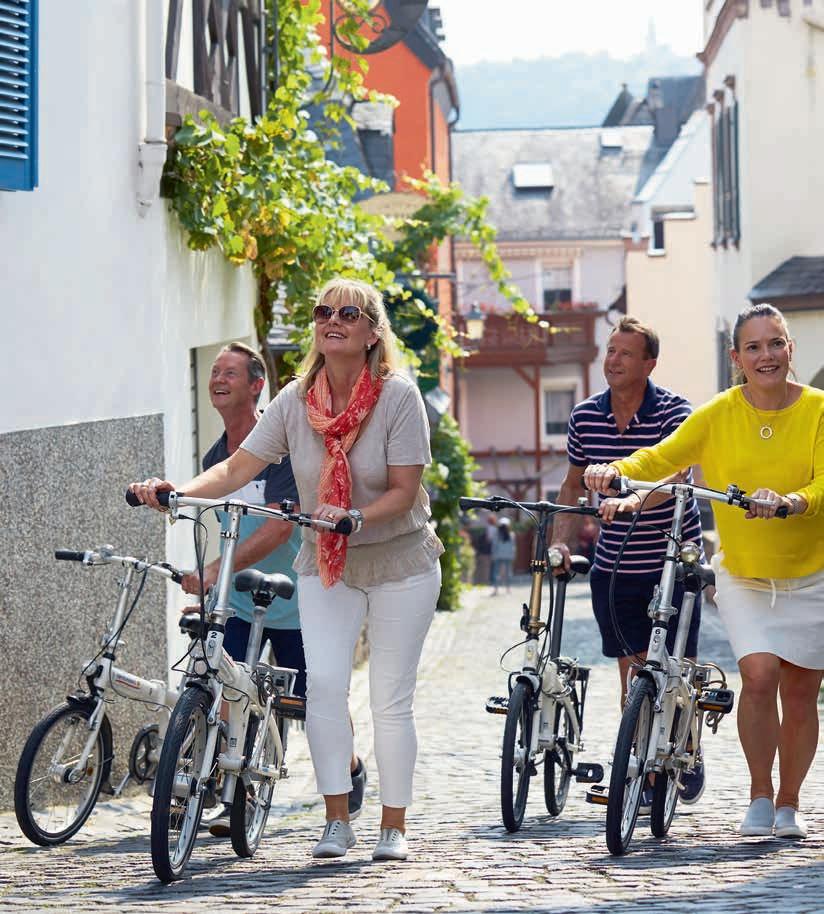
Settle into The Ghan’s gentle rhythm as you travel across the country and immerse yourself in the Northern Territory’s breathtaking natural wonders on this spectacular 11-day journey. From exploring the West MacDonnell Ranges to taking your place beside spiritual Uluru and Kata Tjuta, you’ll understand why people travel great distances to see the Territory’s remarkable landscapes and icons.
Highlights & Inclusions
• 3 nights aboard The Ghan Expedition, Darwin to Adelaide including all meals, beverages, and Off Train Experiences
• Explore Nitmiluk Gorge’s natural wonders and rich Indigenous culture
• Venture into the weird and wonderful opal mining town of Coober Pedy
• 2 nights’ accommodation in Alice Springs, including breakfast daily
• 5 nights of intimate small-group touring with Outback Spirit, travelling on board a state-of-the-art 4WD Mercedes-Benz vehicle, including accommodation, meals, and guided touring
• Visit Kings Canyon for a guided scenic walk and journey through the West MacDonnell Ranges, visiting Standley Chasm and Ormiston Gorge
• Visit World Heritage-listed Uluru and enjoy a guided base tour
• Dine under the stars at the ‘Sounds of Silence’ dining experience
• Explore the rock formations of Kata Tjuta and Walpa Gorge
• Admire the internationally acclaimed ‘Field of Light’ display at Uluru
• 10 breakfasts, 7 lunches, 8 dinners
If your dream is to see the best of the Australian outback and immerse yourself in the heart of it with hands-on experiences, this is the ultimate escape. It doesn’t come any better than travelling on The Ghan, exploring Uluru and Kata Tjuta, cruising Nitmiluk Gorge and exploring Kakadu and Litchfield National Parks, all in one sensational journey through the nation’s heartland.
Highlights & Inclusions
• 2 nights aboard the legendary Ghan, Adelaide to Darwin, including all meals, beverages, and Off Train Experiences in Marla, Alice Springs and Katherine

• 2 nights’ accommodation in Alice Springs, including breakfast daily
• 5 nights of intimate small-group touring with Outback Spirit, travelling on board a state-of-the-art 4WD Mercedes-Benz vehicle, including accommodation, meals, and guided touring
• Enjoy a guided walk of Kings Canyon before passing through the West MacDonnell Ranges, visiting Standley Chasm and Ormiston Gorge
• Dine under the stars at the ‘Sounds of Silence’ dining experience
• Admire the internationally acclaimed ‘Field of Light’ display at Uluru

• 3 nights’ accommodation in Darwin, including breakfast daily
• 2 nights of intimate, small-group touring with Outback Spirit, visiting Kakadu, East Alligator River and Litchfield, including accommodation, guided touring and meals

• Cruise on the Mary River spotting wildlife, including crocodiles and birdlife
• Visit the Ubirr art site within Kakadu National Park
• 14 breakfasts, 10 lunches, 10 dinners
The Ghan Expedition Darwin to Adelaide The Ghan Adelaide to DarwinMany of the electric vehicles (EV) on our roads are still based on the basic platforms of internal combustion vehicles, adapted for use as EVs. These include the current model Hyundai Kona, Nissan Leaf and MG ZS EV. Increasingly though, we are seeing more EVs which have been designed from the ground up, meaning they can be designed to better take advantage of their more compact electric drive systems. That means EV-specific features like more storage under the bonnet, a flatter interior floor and more space in the cabin. Watch out for more of these features on new EVs as they’re launched in the coming year, including the Nissan Ariya and Volkswagen ID.4.

For some time, inflatable vehicles have been used by ANCAP and its overseas vehicle crash-testing counterparts to test safety sensing technologies such as autonomous emergency braking (AEB). The so-called ‘dummy vehicles’ are in fact advanced pieces of technology designed to be ‘seen’ by the test cars as actual vehicles, without the risks and cost associated with using real cars and drivers. Nowadays, ANCAP also rates vehicles for their ability to avoid a crash with a motorcycle. All dummy vehicles used for assessing AEB and other systems are highly advanced pieces of test equipment, with the motorcycle one alone costing more than $550,000.

Environmental sustainability and decarbonisation are set to become the most recent legacy of an iconic and extremely rare 1955 Mercedes-Benz 300 SLR coupe which was sold in May 2022 for the equivalent of $218 million – a world record price for any car. Using those funds as seed capital, Mercedes-Benz has committed to supporting a fellowship program that will provide training and scholarships to young people worldwide to implement their projects in the critical areas of sustainability and decarbonisation. Quite an achievement for a racinginspired car which originally had rather different priorities when it was built almost 70 years ago.
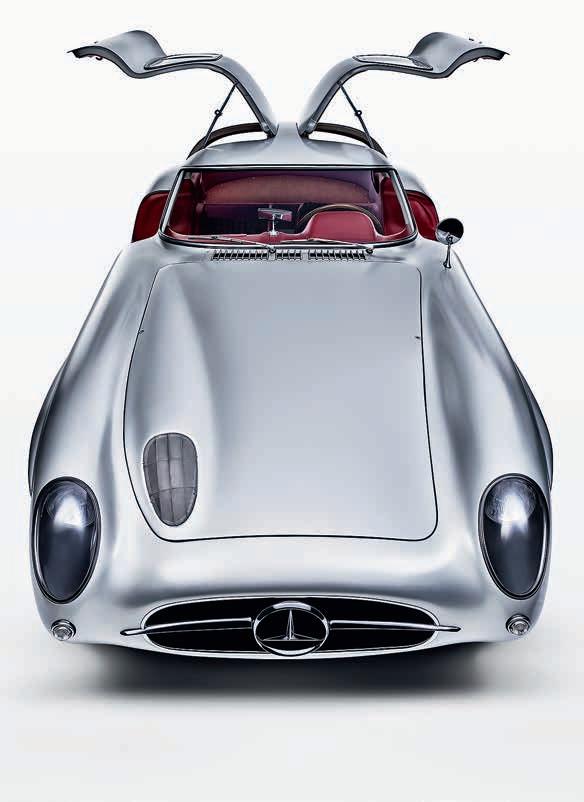


We compare the Nissan Pathfinder with the Hyundai Palisade.
 By Alex Forrest
By Alex Forrest
Passengers sitting in the third row seats of SUVs can now expect a lot more than a couple of flat and squeezy seats. Today, if you choose the right large SUV, third row passengers will get actual headroom, USB charging ports, the ability to recline the seats and of course, cup holders.

Most importantly for those relegated to the so-called cheap seats, in some SUVs the driver or front passenger can amplify the conversation of those up front through to speakers in the third row, so everyone can be part of the conversation.
Large SUVs haven’t got cheaper but most have kept up with the needs of modern families. Two recent newcomers are the updated Hyundai Palisade and the new Nissan Pathfinder.

We tested the 2.2-litre diesel Palisade all-wheel drive and the 3.5-litre V6 petrol Pathfinder. On their engines alone, these two tackle the task of multi-purpose family transport in quite different ways. Let’s see how they do.
Comparing the petrol V6 Palisade against the Pathfinder (which is only available with a petrol V6 – no diesel is offered) in top-of-the-range variants, pricing is close - starting at $77,560 for the Pathfinder Ti and $77,950 for the Palisade Elite diesel.
Both are well equipped, but the major difference between these is that the Palisade petrol is only available in front-wheel drive. If you want all-wheel drive in the Hyundai, you’ll have to select the diesel and that will cost you another $4200. In contrast, the range-topping Pathfinder has all-wheel drive.
Fit and finish in the new Pathfinder is a major improvement over its predecessor, bringing it into line with the other major players. The Hyundai has the few extra features which nudge it closer to premium car levels.
There’s a smoothness to the petrol V6 Pathfinder that really does add to its refinement, especially during highway cruising. The Hyundai’s diesel is slightly louder, but it does make up for its more vocal demeanour by delivering all of its 440Nm of torque from as little as 1750rpm – exactly what you need in a vehicle like this.
The Pathfinder’s lack of powerplant options such as a diesel, hybrid or small turbo petrol – which are available in most competitors – may limit its appeal, primarily because of the varying needs and tastes across buyers.

But the Pathfinder’s towing capacity (2700kg, braked) is superior to that of the Palisade (2200kg), so if you have a heavy trailer to tow occasionally, out of these two, the Pathfinder will do it more comfortably.
Safety features are abundant in both vehicles, with each receiving the full 5 stars after being tested under ANCAP’s 2022 protocols.
The Palisade has a full-size spare wheel and tyre – a feature we’ve benefitted from in the past. The same can’t be said of the Pathfinder, which carries a space saver spare. Still, that’s better than a tyre inflation kit.
Both these big haulers can be specified as seven or eight-seaters, and there are front centre airbags and head-protecting curtain airbags for all three rows. When reversing a trailer with the Pathfinder, make sure you turn off the reversing auto braking, which can pick up the trailer as an object you’re about to hit.
The Nissan Pathfinder has made some important steps forward with this new model, including the nine-speed transmission and a marked uptick in interior fit and finish quality. But the Hyundai Palisade’s diesel option, its full-sized spare tyre and now more affordable pricing for the petrol following the Pathfinder’s price increases, all combine to get it over the line this time.
ENGINE 2.2-litre turbo diesel
POWER 147kW @ 3800rpm
TORQUE 440Nm @1750-2750rpm
CLAIMED FUEL ECONOMY 7.3L/100km
PRICE from $77,950*
ANCAP SAFETY RATING
ENGINE 3.5-litre V6
POWER 202kW @ 6400rpm
TORQUE 340Nm @ 4800rpm
CLAIMED FUEL ECONOMY 10.5L/100km
PRICE from $77,560*
ANCAP SAFETY RATING
ENGINE
Permanent synchronous electric motor
POWER 170kW
TORQUE 330Nm
CLAIMED ENERGY CONSUMPTION
193Wh/km (single motor)
PRICE from $84,990 drive away
ANCAP SAFETY RATING
Of all the car manufacturers with long histories of building internal combustion vehicles, Volvo is one of the most ambitious when it comes to moving towards full electrification.
The Chinese-owned brand has even announced that it plans to be making only fully electric cars by 2030.
The C40 is based on the same platform as the XC40 small SUV, Volvo’s biggest-selling model in 2022 and the model that helped the brand get to 10,000 annual sales, a record for Volvo.

Like the XC40, the C40 is available with either a single motor driving the front wheels, or two motors driving all four wheels. The C40’s battery size varies depending on whether you choose the twin motor (78kWh) or the single motor (69kWh).

It’s key points of difference from the XC40 are the large sloping rear-end styling, and being electric-only.
Its interior design is similar to that of the XC40, meaning it is quite clean and minimalist, with the large central control screen as the central feature.
The C40’s two different battery sizes do of course provide differing ranges, with the single motor’s 69kWh pack offering a claimed 438km, and the twin motor’s 78kWh pack providing 451km.
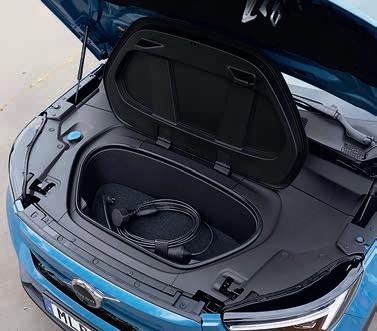
Like other EVs, sustained highway driving will run down the battery much earlier than this, and it’ll deplete even quicker with the air conditioning on.
The C40’s glass sunroof is a cool feature at night, but during the day it does still let heat in, even though it blocks UV light.
Charging is easy thanks to the charging flap which doesn’t need to be released from the inside, and the lack of a fiddly cover over the plug receiver. The C40 can also accept quite a high rate of charge – we saw it charging at 127kW when using RAC’s fast charger.


Well before Genesis built an electric version of the GV70, the earlier petrol and diesel versions were already compelling thanks to their features, value, performance and exceptional build and finish.
But in the current market, any serious competitor in the luxury mid-sized SUV market needs to have some form of electrification in the lineup. Which is why we have the GV70 Electrified.
With its hunkered down stance and slick, finely detailed interior and strong reliability record with Lexus-like levels of customer support, the Genesis GV70 is compelling even before an electric drivetrain is added.

The GV70’s platform was originally designed to also be compatible for both electrification and internal combustion, so it benefits from that. Though a platform designed purely for an EV may bring further benefits. Under the GV70 Electrified’s floor is a large battery pack which has capacity to store 77.4kWh. It powers two electric motors (one front, one rear) which together produce 360kW and 700Nm.
Of course, with that kind of output, the GV70’s performance is, let’s say, attention-grabbing. That acceleration is even more startling because of its near silence, a trait that suits the GV70’s luxurious and serene interior.

With all that said, the GV70’s purely electric drivetrain isn’t really its main act. It’s also an extremely well finished and capable luxury SUV, and the GV70 prioritises that as its selling point. Electrification is simply how the GV70 achieves and delivers those traits.

The GV70 Electrified also has a trick up its sleeve that not many other EVs can boast – it can be used as a 240-volt power source. So you can use the car to power things like a vacuum cleaner and avoid the need for extension cords. The matte paint option looks cool, but the stress of it being damaged may not be worth the extra outlay.
ENGINE
Permanent synchronous electric motors
POWER 360kW
TORQUE 700Nm
CLAIMED ENERGY CONSUMPTION
199Wh/km
PRICE from $141,330 drive away
ANCAP SAFETY RATING

We offer a wide range of free services like counselling, massage, wellness courses and complementary therapies, which can be accessed in one of our centres across Western Australia.
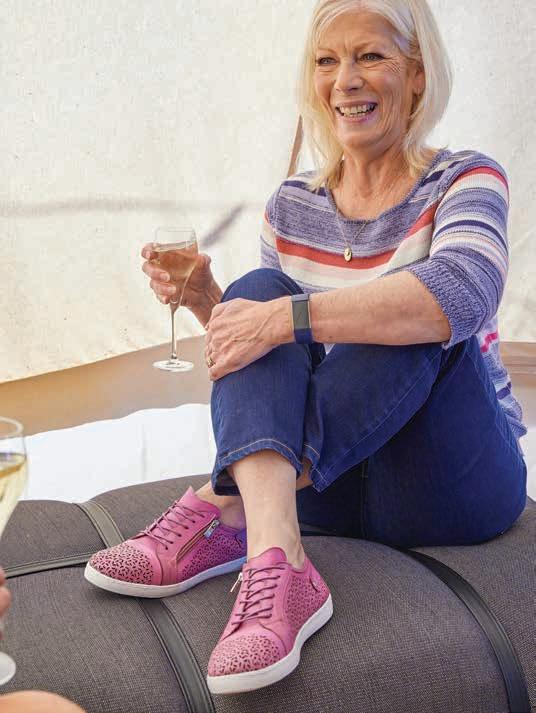

Solaris has been providing cancer support services for over 20 years, and we know that a cancer diagnosis can affect every part of your life.
Our centres are located at Cottesloe, Sir Charles Gairdner Hospital, St John of God Hospital – Subiaco, Bunbury and Albany. We also provide support in Joondalup and in the Pilbara region, including those traveling to Perth for treatment.

Visit our website for more information on how we can support you or someone you know with cancer – www.solariscancercare.org.au
P: 08 9384 3544 E: info@solariscancercare.org.au

“Solaris is a genuine place where people go to be supported and looked after… they have provided us both with life changing care in our time of need.”
– Carl & Natasha, 2023 Ambassadors
Are you, or someone you know, having treatment for cancer?
RAC members can take advantage of our Motoring Advice Line. If you have a motoring question, call 6150 6199 Monday to Friday between 9am and 5pm to speak to one of our experts.
QFor travelling on dusty gravel roads both behind and against traffic, people have mixed views on whether you should have the air conditioning set to recirculate or fresh air to prevent the dust from entering the vehicle. Could you please advise which is the correct method?
 Noel, Kingsley
Noel, Kingsley
AIn dusty conditions, switch your vehicle’s ventilation system to recirculate to prevent dust from entering the cabin. When the air becomes clear, switch back to the fresh air setting. In hot weather, initially turning on the recirculation will help get the interior of your car cool more quickly. In cold weather, switching it off will help avoid fogged up windows.
QWhen my 2022 Mazda CX30 accelerates from standstill, it always makes a loud engine noise as revs go up past 3000rpm. This is even more apparent when it is going up a ramp or slope. I used to have a second-hand 2012 Toyota Corolla and it did not make such loud noise. Should I be worried?
Joseph, CarlisleAModerate engine noise is not a major concern, and an engine under load will typically be louder as revs increase to generate the outputs required. It will be more prominent in some vehicles than others. Also, check whether you haven’t inadvertently selected the “Sport” drive mode, which will hold lower gears for longer, creating more engine noise. Having your vehicle checked at its next service may also be prudent.
QI own a 2021 Jeep Grand Cherokee with GPS fitted. The trouble is that their maps date from 2016 and you can’t rely on it. I now use a window mounted Tom Tom. Is it possible to load the Jeep GPS with Tom Tom, Google or Whereis maps?
John, BunburyAThe Australian Jeep website does have a facility where you can enter your vehicle’s VIN and then check whether a sat nav update is available. If payment is required, a more affordable alternative may be to use a smartphone, which will have more up-to-date maps. Just remember to only use it hands-free while driving.
WIN FREE FUEL
Send us your question for the Car Doctor and if it’s published, you’ll receive a $50 fuel voucher to use at any Puma and Caltex locations Australia-wide, thanks to RAC Member Benefits.
Send your questions to editor@rac.com.au or post to The Car Doctor, Horizons, GPO Box C140, Perth WA 6839
Please include your full name, address and daytime telephone number with your question.
If your question is chosen for publication, please allow up to eight weeks for delivery. See page 81 for terms and conditions of entry.
From July 2021 to June 2022, around 194,100 Australian households (2.0%) experienced a break-in, according to household crime data from the Australian Bureau of Statistics.
In Western Australia, the break-in rate increased to 2.9 per cent, up from 2.4 per cent in 2020/21.
To find out about some of our members’ experiences with home break-ins, see the results of RAC’s 2022 Home Security Survey on page 24.
A disused depot site in the small South West town of Dardanup has been transformed into a welcoming new community space, through our Reconnect WA initiative.
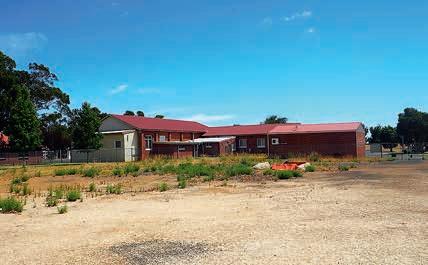

The revitalised space now features outdoor art, a nature play trail, new pathways and a community event space in the town centre. The Shire of Dardanup celebrated the opening of the new space with a special launch event.
To find out about other Reconnect WA projects, visit rac.com.au/reconnect
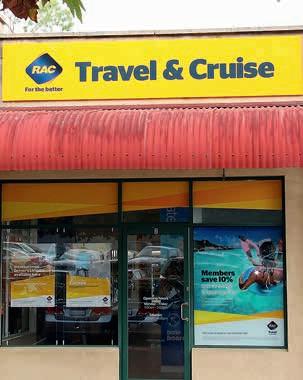
If you’ve been a customer of RAC Travel in Applecross or the travel centre within RAC’s Mandurah branch, please be aware that both travel centres have now permanently closed, however the remainder of RAC’s Mandurah branch remains open.
Staff shortages across the travel industry have made these closures necessary, however all consultants have been relocated to our four remaining centres.
Additional consultants will also be recruited to our other branches to ensure we can continue to provide a great experience for our members across a range of different services.
You can visit us for travel enquiries and bookings at RAC Travel in Dianella, Joondalup, Carousel and West Perth.
To contact your nearest branch, visit rac.com.au/travel
Winter in Perth and the southern half of WA can bring severe thunderstorms, with strong winds, heavy rain and hail, resulting in property damage. By far the most common damage reported is to fences. In 2022, 48 per cent of total storm insurance claim costs to RAC were for fence replacements, up 7 per cent on 2021.
To minimise the risk of damage to your fence this winter, some simple maintenance can help.
Steel fences such as Colorbond, have good corrosion resistance, but are not immune to it, especially in coastal areas. If part of your fence is dented or chipped, sand back the affected area, apply a rust inhibitor and a suitable protective coating.
Also periodically wash off any debris that may accumulate against the fence.
If you have a timber fence, inspect the foundations for wood rot and termite damage, nail down loose pickets and inspect the posts. Applying a protective stain can help prevent wood rot and keep the timber in good condition.
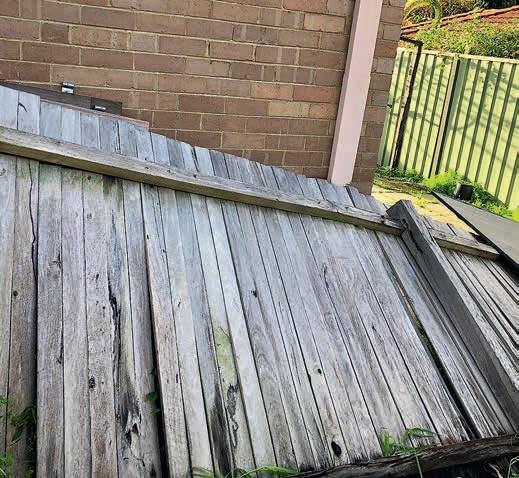
Fibre cement fences, such as HardieFence, are particularly prone to damage from high winds and often snap at the base, so avoid any build-up of soil at the base of the fence. No fences should be used as retaining walls for garden beds. The pressure of large amounts of soil on one side can weaken the foundations.
Ahead of storm season, ensure your building insurance policy has the right level of cover. If a storm does damage your fence, we’ve made it easier to claim online so you don’t have to call at a time when call volumes may be high. You can submit your claim 24/7 by visiting rac.com.au/claim
Ignoring bald tyres can have a number of negative consequences, especially once you hit wet roads.
Driving on bald tyres can make it difficult to stop when you need to apply your brakes firmly, which could cause your car to skid out of control on a wet road.
Aquaplaning is a major risk when driving on bald tyres in the wet. When water can’t be adequately funnelled from the tyre’s contact patch and the wet road, the surface becomes extremely slippery.
Having low tyre tread also increases the likelihood of punctures. A high tread level provides a buffer between the road’s surface and the inflated tyre.
On loose road surfaces, bald tyres make the likelihood of losing control even greater, due to a loss of traction between the tyre and road surface.

If it’s been a while since you checked your tyres, take a look at the wear indicator bars moulded into the tread. If the bars are level with the tread, it's time for new tyres. If you don’t have tread wear indicators, grab a free tyre gauge from one of RAC’s nine Auto Services centres.
To save you time and inconvenience, remember RAC’s mobile tyre service can come to you, within the Perth metropolitan area. Members also get 10 per cent off tyres.


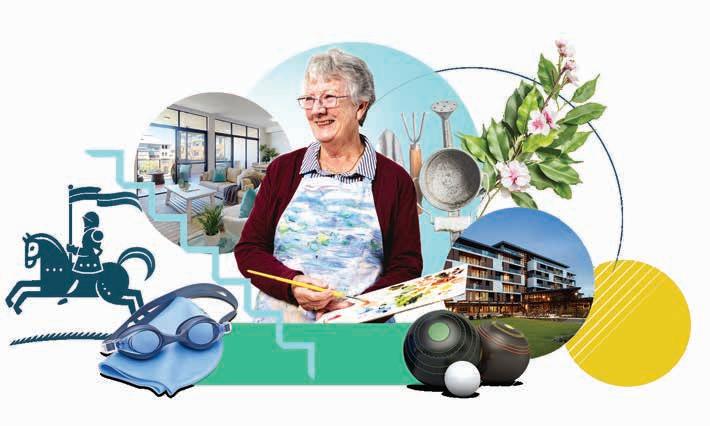
Make




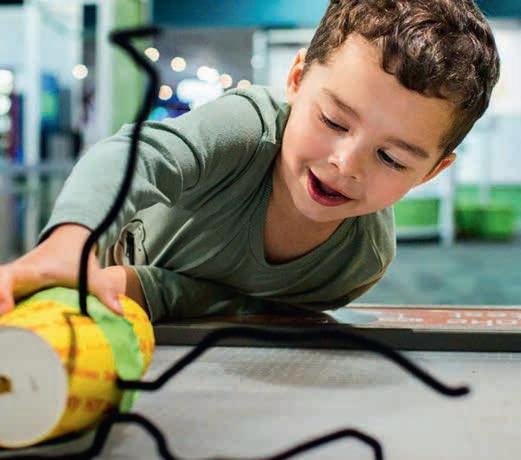
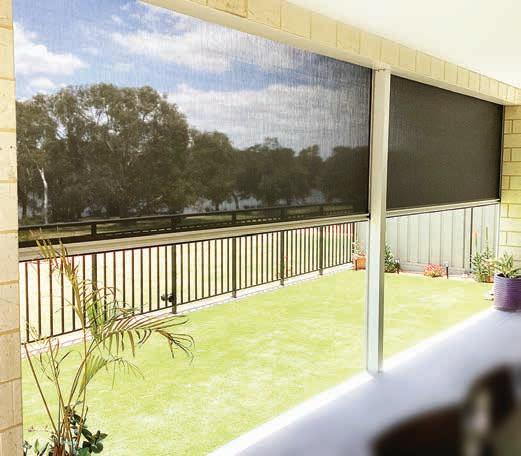
RAC
save
an extra
60 Day Price Promise
Access easy and affordable finance options with interest-free repayments. It’s the stress-free way to shop at Retravision.
WH92619 Partner offers RAC members save 5%* 66







































W.e’ve all experienced that dreadful feeling of getting in your car only to find out your battery is flat. Luckily West Aussie company iTechworld has designed a portable jump starter to get you on your way within seconds.
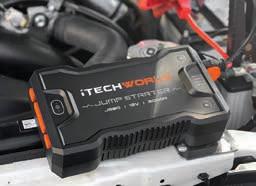


Designed to easily jumpstart any vehicle with a flat battery, the JS80 will jumpstart your car, boat or motorbike at the press of a button.

With a massive 3000 starting amps, the JS80 will start any vehicle, no matter how big or small. With seven inbuilt safety features, jump starting is safer than ever before. With the JS80, you no longer have to rely on clumsy jumper cables or other vehicles, allowing you to explore further with peace of mind.
The JS80 will jump start a vehicle up to 40 times from one charge and hold its charge for six months all while sitting happily in a glove box awaiting use.

Once your vehicle is started, the JS80 will continue to be your friend on the road and will easily run 12V fridges and charge mobile devices.
My new JS80 Jump Starter arrived on time, as promised, so I charged it up and stored it in the included storage bag. Three weeks later, my wife had a flat battery and would be late to get the kids to school. I got my JS80 out, quickly and flawlessly jump-started her car, and away she went. Happy wife, happy life.
TOTALTINTSOLUTIONS.COM.AU

100% WA Owned and Operated
Our 3M tinting products are quality guaranteed with a LIFETIME manufacturer’s warranty to ensure you’re receiving the best window tinting. We stand by our tinting products and craftsmanship 100% and always go above and beyond to ensure we meet the unique needs of our valued customers.




ENSURING QUALITY, AFFORDABILITY AND GREAT ADVICE.
WANAGARA: 9444 2327
ROCKINGHAM: 9582 8053
MANDURAH: 9582 8053
MYAREE: 9317 1010
OSBORNE PARK: 9444 2327

ALBANY: 9842 9215
Members receive 5% off
Windows*
All Tracklander roof racks and accessories are designed by our R&D team in Perth and tested in WA. Tracklander’s robust aluminium construction provides a 100% Off-road load rating.


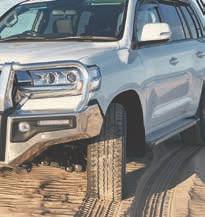

Tracklander’s lightweight and super strong design is a unique combination giving maximum load carrying capacity. Our mesh base system provides multiple tie-down locations and is welded at every contact point to eliminate fatigue.

Tracklander roof racks have been fully tested on and off road in WA and are available with our wind deflection technology to provide a quiet travel and minimise fuel consumption.




Tracklander roof racks and mounting kits are kept as low as possible to provide maximum clearance for your garage or public car parks. (For example, our new flat top is only 55mm above the roof of Toyota LC200 series model.)
All our products are backed by an incredible 5year/unlimited km guarantee.












building roof
quality product that won’t
down.















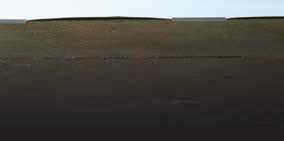







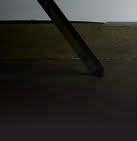



















































Do
This
Aid is virtually undetectable!

Introducing our brand-new 2023 hearing aid technology that was designed in Europe and is made for your exact ear size and hearing loss. It’s so small it can fit deep inside your ear canal, it begins where other hearing aids end. This makes it virtually invisible to anyone else.
With our new 2023 voice clarifying hearing aids, you will absolutely hear the difference!
Members receive $600 off each hearing aid purchased or $1200 off a pair of hearing aids








Entrants may submit more than one entry. Up to three entrants (winners) will be awarded only one prize as follows: one $50 fuel voucher to use in one transaction at any Puma/Caltex location Australia-wide. The prize is not transferable or redeemable for cash. Entries that do not, in the absolute discretion of the panel of judges, comply with these requirements are invalid. The winner will be notified by email, telephone or letter. When the winner is notified of their prize, they will also be provided details as to the collection of their prize. Entrants published in June/July 2023 Horizons must claim their prize by 12 July 2023. In the event that no contact details are supplied, or RAC cannot make contact with the winner, the prize may be withdrawn at the absolute discretion of Horizons magazine. Prizes will only be awarded following winner validation and verification. This competition is subject to the promoter’s privacy and security statement and group privacy policy.
Entrants may submit more than one entry. One entrant (winner) will be awarded only one prize as follows: a year’s Classic Roadside Assistance valued at $195. If the winner already has Roadside Assistance, the Classic Roadside Assistance will be applied as credit to their account until their cover runs out. Entries that do not, in the absolute discretion of the panel of judges, comply with these requirements are invalid. The winner will be notified by email, phone or letter. When the winner is notified of their prize they will also be provided details as to the collection of their prize. Entrants published in June/July 2023 Horizons must claim their prize by 12 July 2023. In the event that no contact details are supplied, or RAC cannot make contact with the winner, the prize may be withdrawn at the absolute discretion of Horizons magazine. Prizes will only be awarded following winner validation and verification. This competition is subject to the promoter’s privacy and security statement and group privacy policy.
The Royal Automobile Club of WA (INC) 832 Wellington Street, West Perth GPO Box C140, Perth WA 6839
T: 13 17 03 W: rac.com.au
Member Service Centres – Metropolitan
CAROUSEL Shop 1098, Westfield Carousel, 1382 Albany Highway
DIANELLA Shop 20, Dianella Plaza, 360/366 Grand Promenade
MANDURAH Shop SP037, Halls Head Central, 14 Guava Way
WEST PERTH (Head Office)
832 Wellington Street
Member Service Centres – Regional
ALBANY 110 Albany Highway
BUNBURY Primewest Centrepoint SC, 60 Blair Street

GERALDTON Shop 8, Stirlings Central SC, 54 Sanford Street
KALGOORLIE 51-53 Hannan Street
Travel Centres
CAROUSEL Shop 1098, Westfield Carousel, 1382 Albany Highway T: 6150 6454
DIANELLA Shop 20, Dianella Plaza, 360/366 Grand Promenade T: 6150 6455
JOONDALUP Shop T31, Lakeside Joondalup SC, 420 Joondalup Drive T: 6150 6477
WEST PERTH (Head Office)
832 Wellington Street T: 9436 4830
Perth Art Academy offers a range of art classes in traditional and contemporary art techniques.








Your tutor will carefully take you through the creative process, step-by-step teaching from absolute beginners to more advanced students, helping students find their own artistic voice.

Classes are situated at 4/201 High Street, Fremantle. Parking available.
For further information or to book a class please visit our website: www.perthartacademy.com

Pitstop Park
Banksia Grove
This innovative play space is part of a bigger green space and offers lots of activities for all ages. The highlight is the PitStop track that enables young riders from four years and above to experience the feel of riding a race track in a safe environment.
Shipwreck Cove
Golden Bay
Right by the beach, this nautical-themed park includes a BMX pump track and an underwater-themed road bike and scooter circuit. When the kids get tired of cycling there is also a lookout to climb and loads of exciting play equipment.
MacDonald Park Playground
Padbury
MacDonald Park Playground is a popular bike skills track that includes a place to stop and fill up with pretend fuel. A parking area for bikes and scooters add to the real-life experience of the circuit. Nearby oval facilities, a barbeque area and a nature playground make for a great day out for the whole family.
Rendell Park
Koondoola
A winding bike track is a feature of this play area. It compliments a playground for younger children and offers entertainment for pre-schoolers and primary school-aged kids alike. Road
signs highlighting pedestrian crossings, no-through-roads and speed bumps provide a realistic road challenge for young riders.
Hossack Reserve Parkwood
The slightly longer bike track here is great for getting everyone on their bikes, from toddlers to teens. The track has many road signs and is an ideal way to teach young riders about roundabouts, no-entry signs and other road rules. The rest of the reserve includes everything a family might need for a great day out.
Shepherds Bush Reserve
Kingsley
This special track is perfect for younger children and even includes a filling station to top up the bike or scooter with make-believe fuel. The track is small but perfect for racing and road skills development. For older children there is also a pump and jump BMX track. Shepherd’s Bush Nature Reserve contains interesting nature walks that offer the perfect break between racing and jumping.
Piara Waters
The bike track at this compact playground has all the elements needed for building road sense for toddlers and pre-schoolers. Meanwhile older kids can practice their skateboard, scooter or BMX
skills on a small pump and jump bowl. The size of the bowl means that children still getting their confidence on different types of wheels can slowly build their skills.
The bicycle racetrack here is hard to beat. The track includes a start and finish line, multiple lanes and traffic signs. If racing isn’t your child’s thing, then there are several other bike and scooter paths that wind their way through the play areas, including a ‘learn to cycle’ track.
Looking for a full-sized bike circuit to test those training wheels or even to take them off? Then this Armadale reserve is the answer. The bike track is just like riding on
a road. There are roundabouts, stop and give way signage and no cars. The reserve also includes a full-sized basketball court and skate park.
Toddlers to middle-primaryschool aged children will love this enticing little bike circuit. While designed for bikes, it is also well suited to ride-on push toys and scooters. A bigger bike track circles the larger area of the park providing a perfect distraction for older riders while their younger siblings learn about road rules, signage, speed bumps and pedestrian crossings
DO
Send your suggestions to editor@rac.com.au



